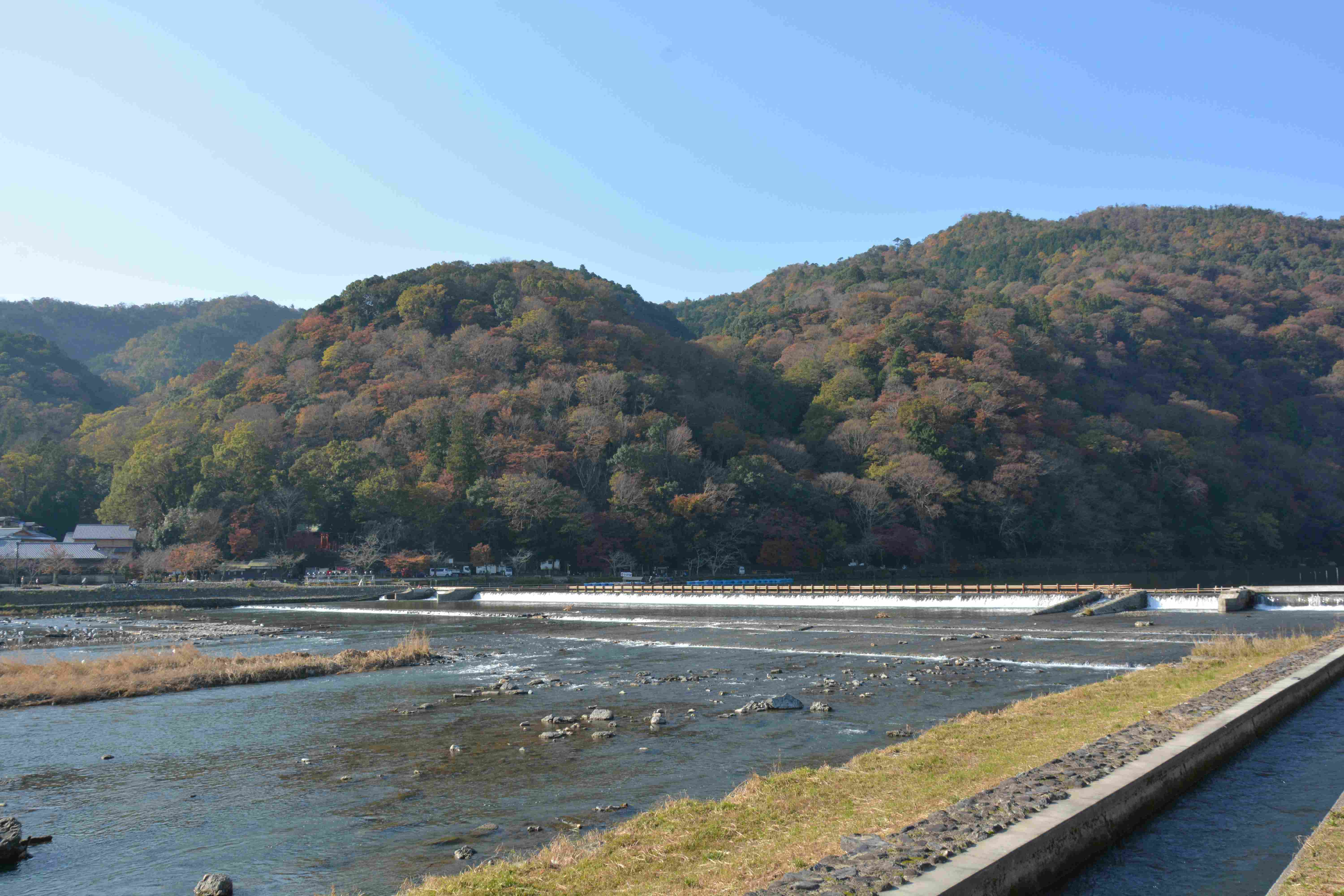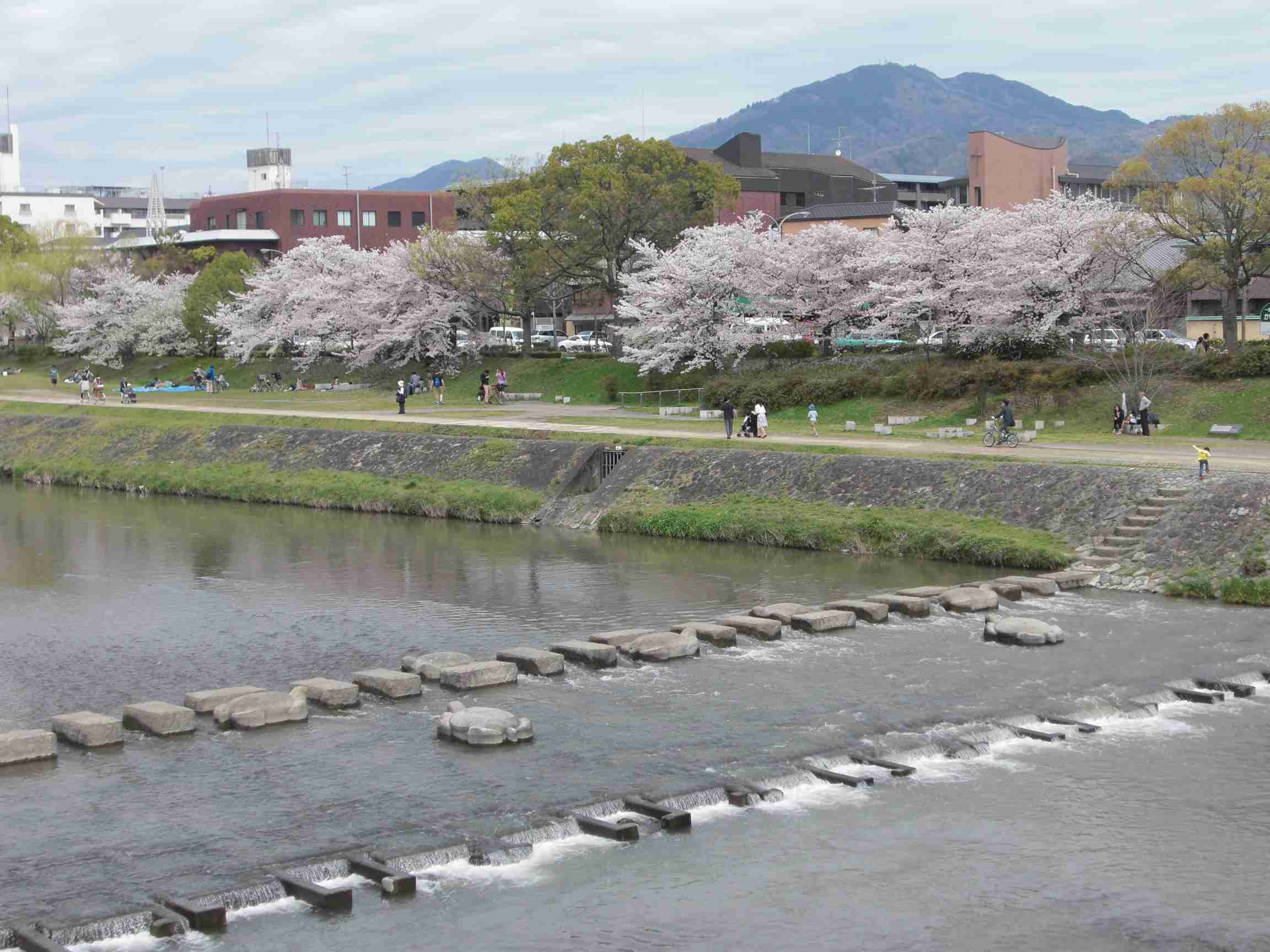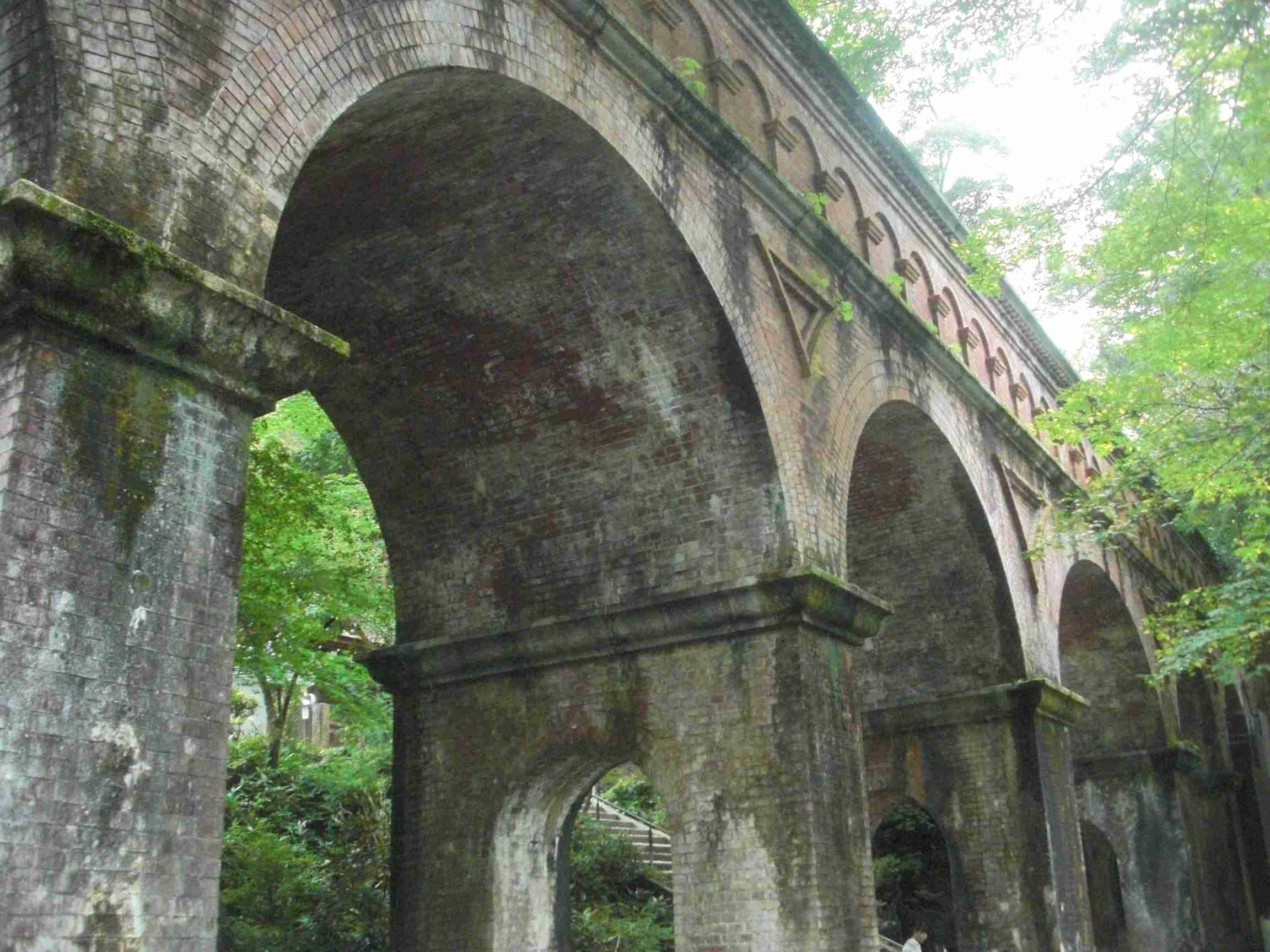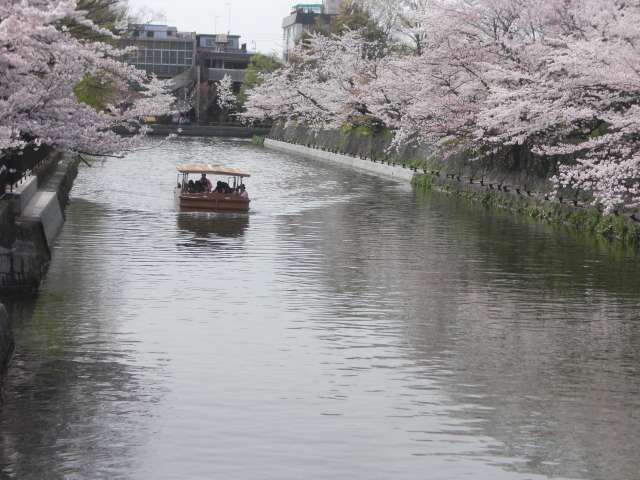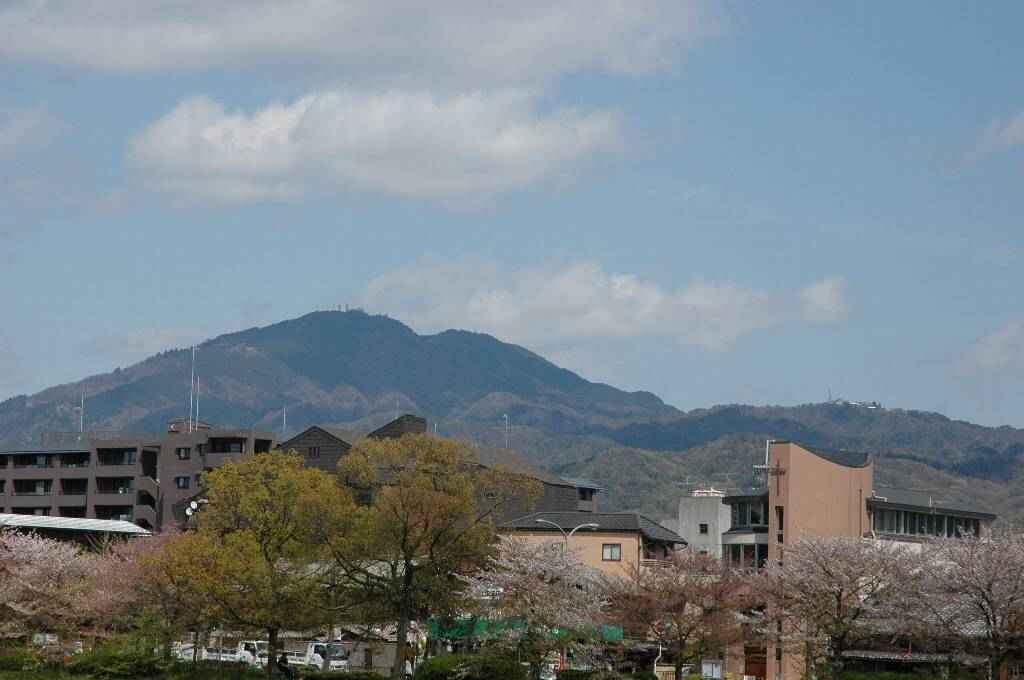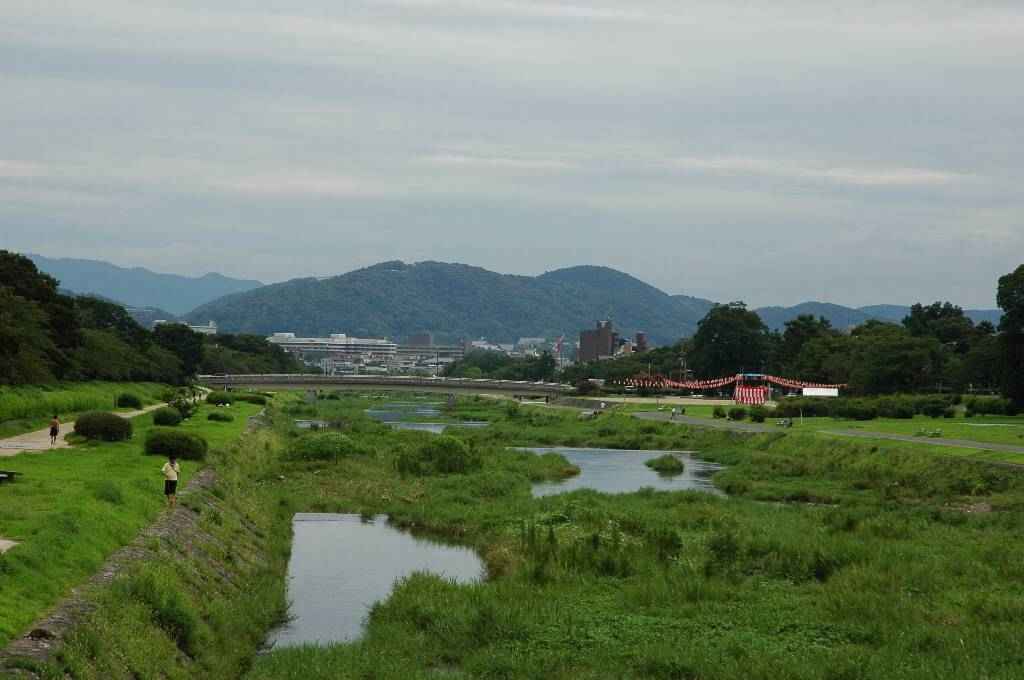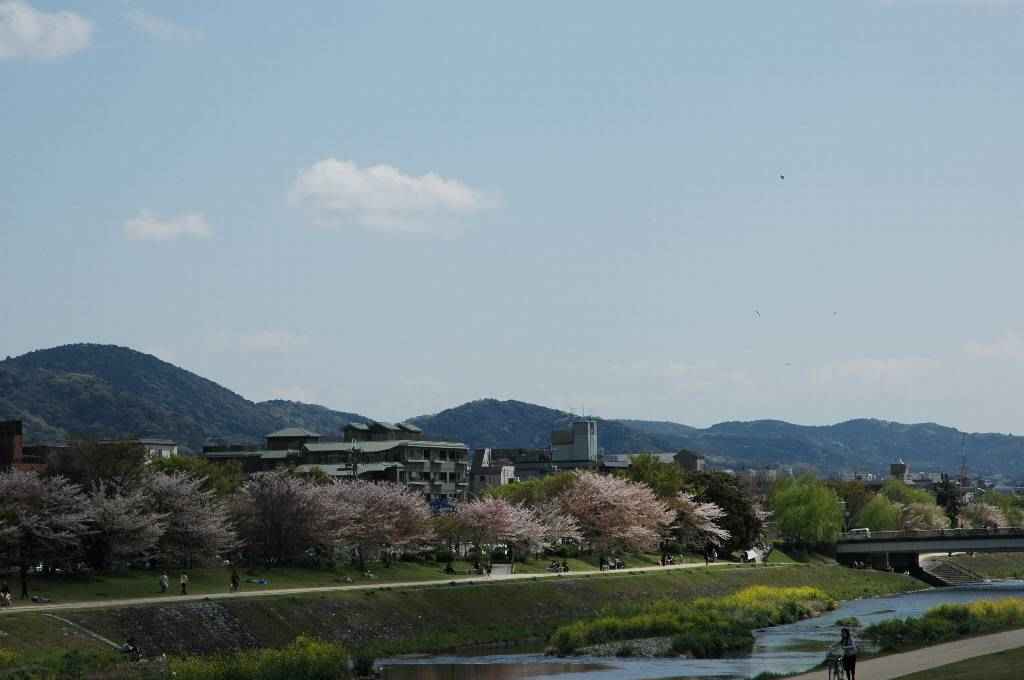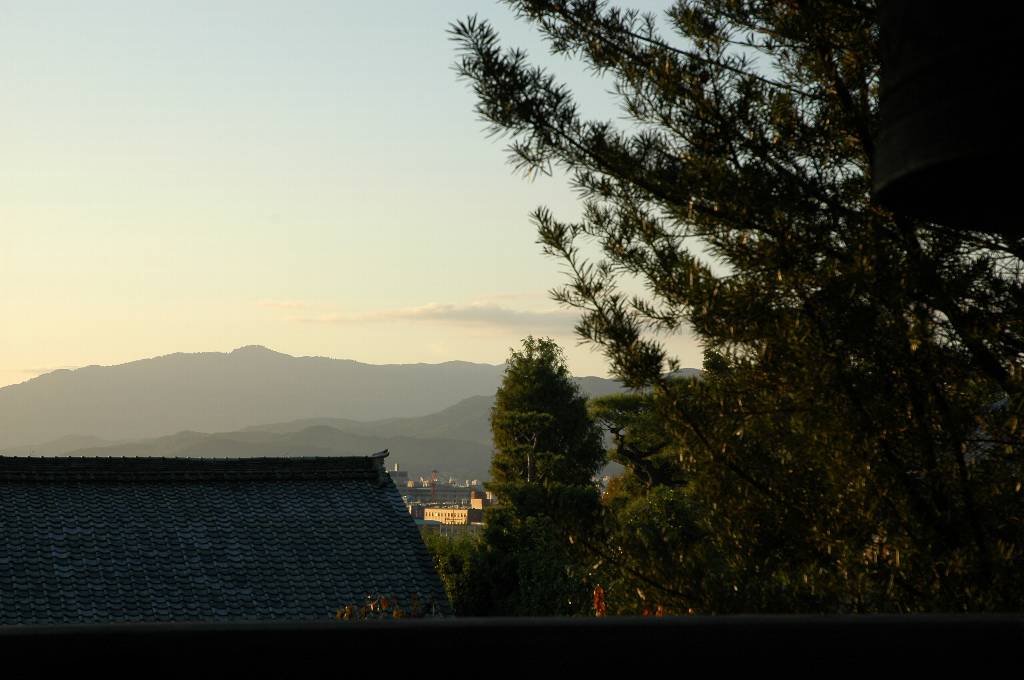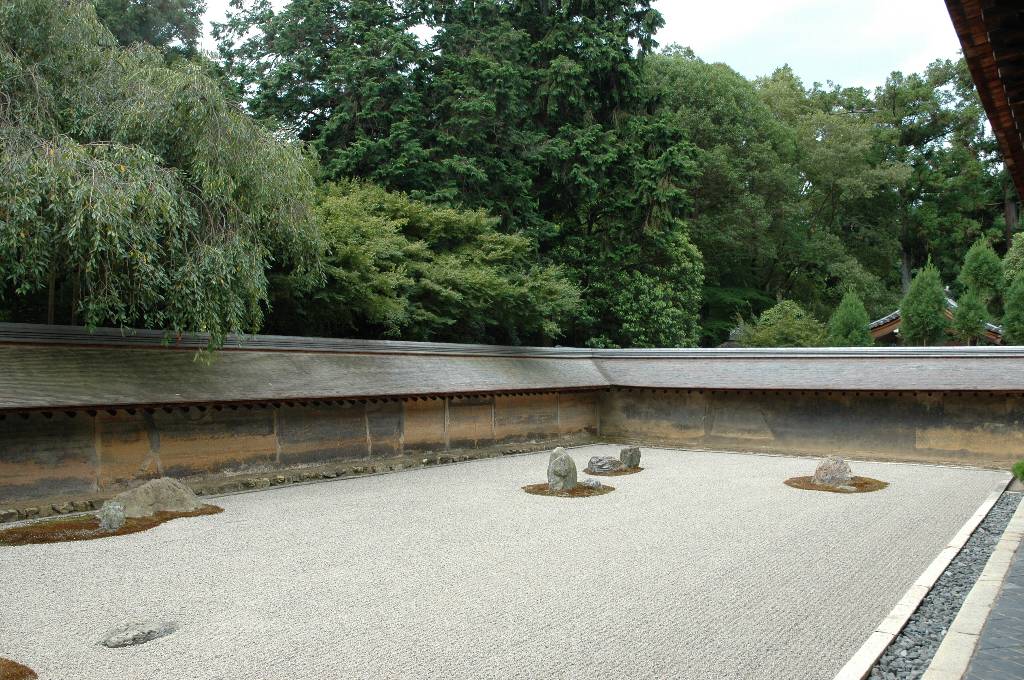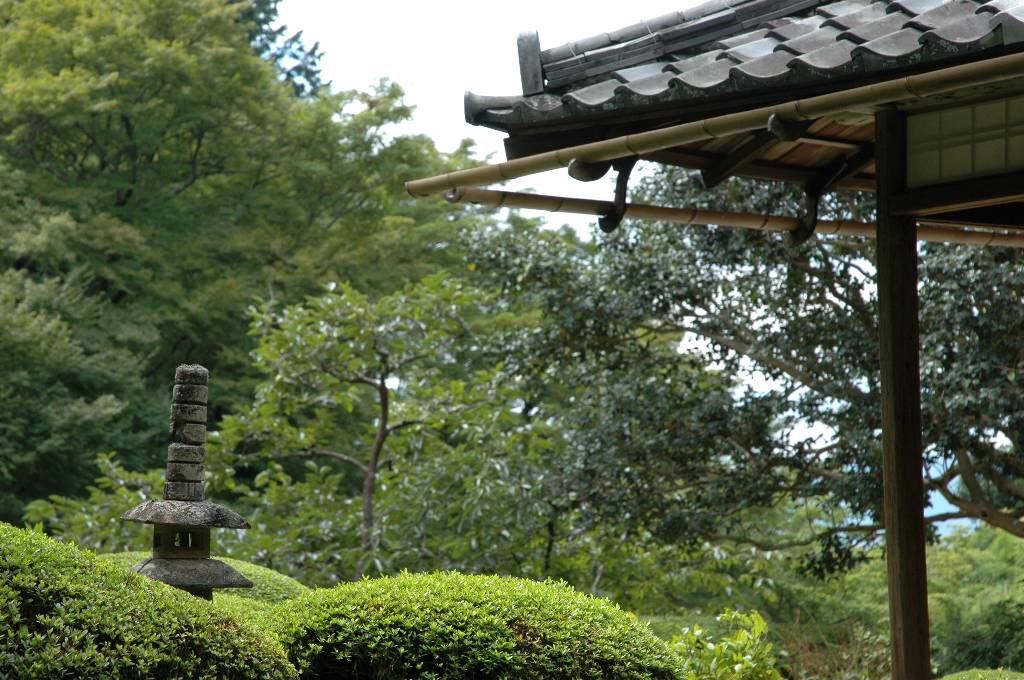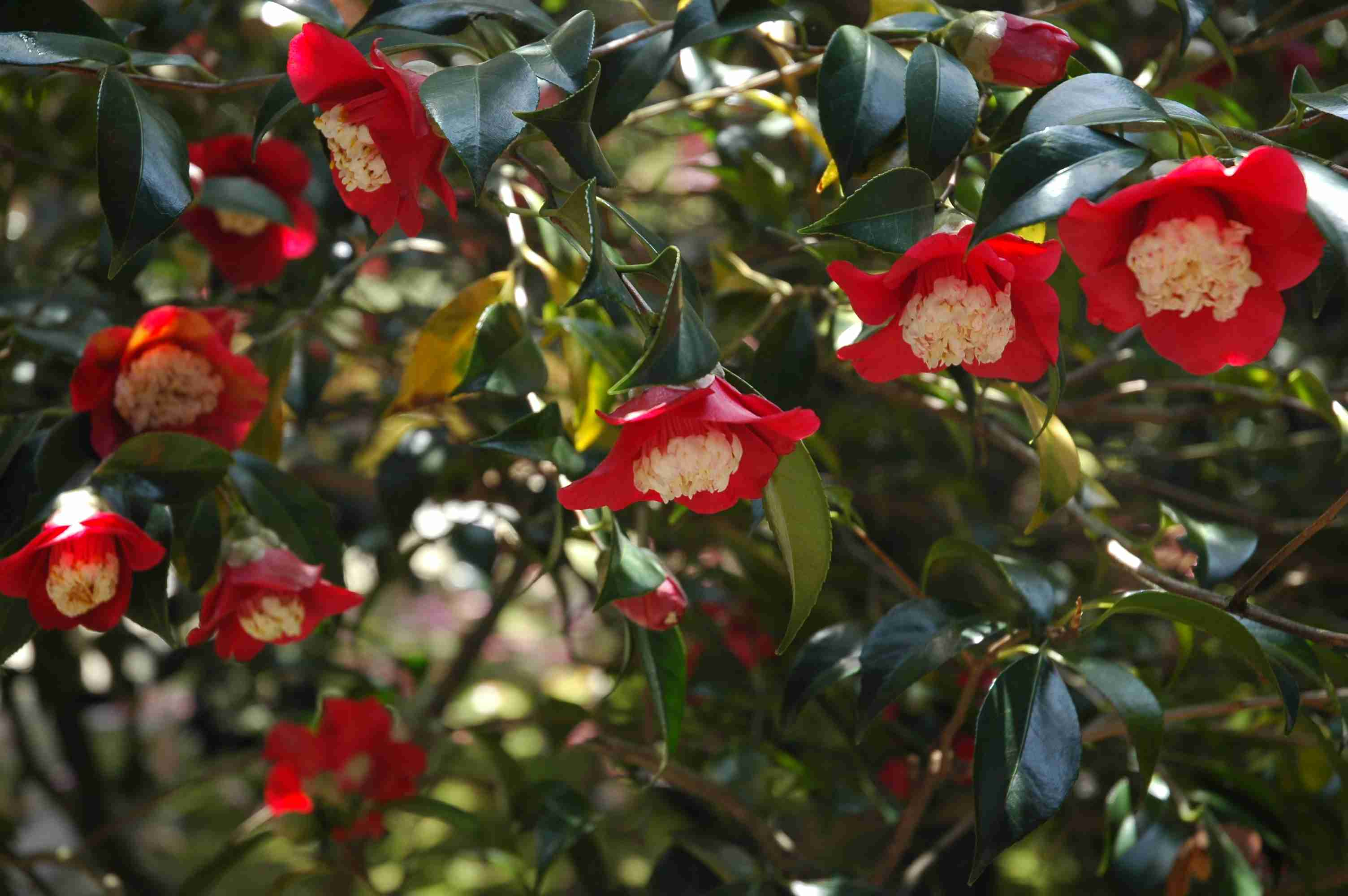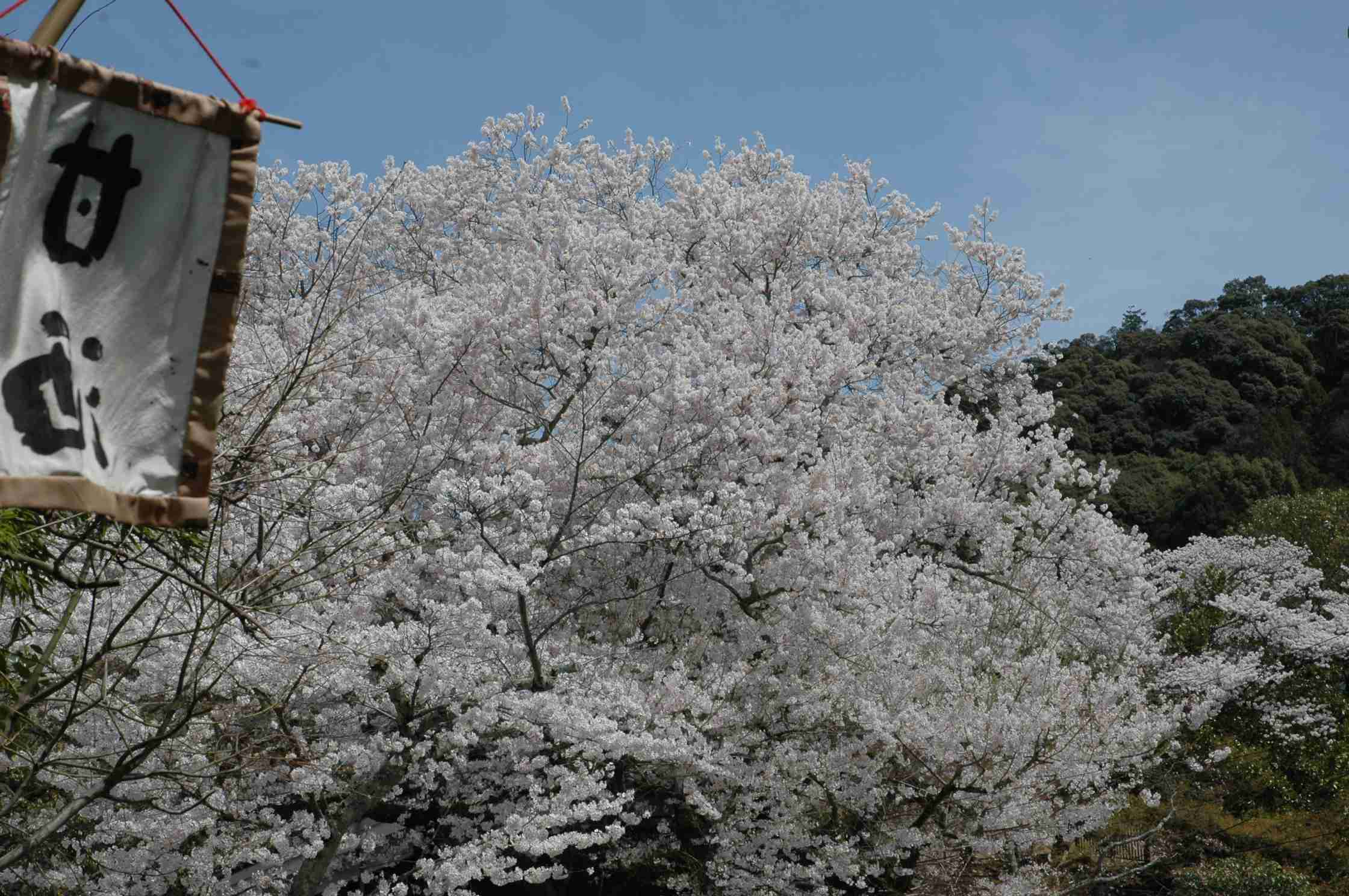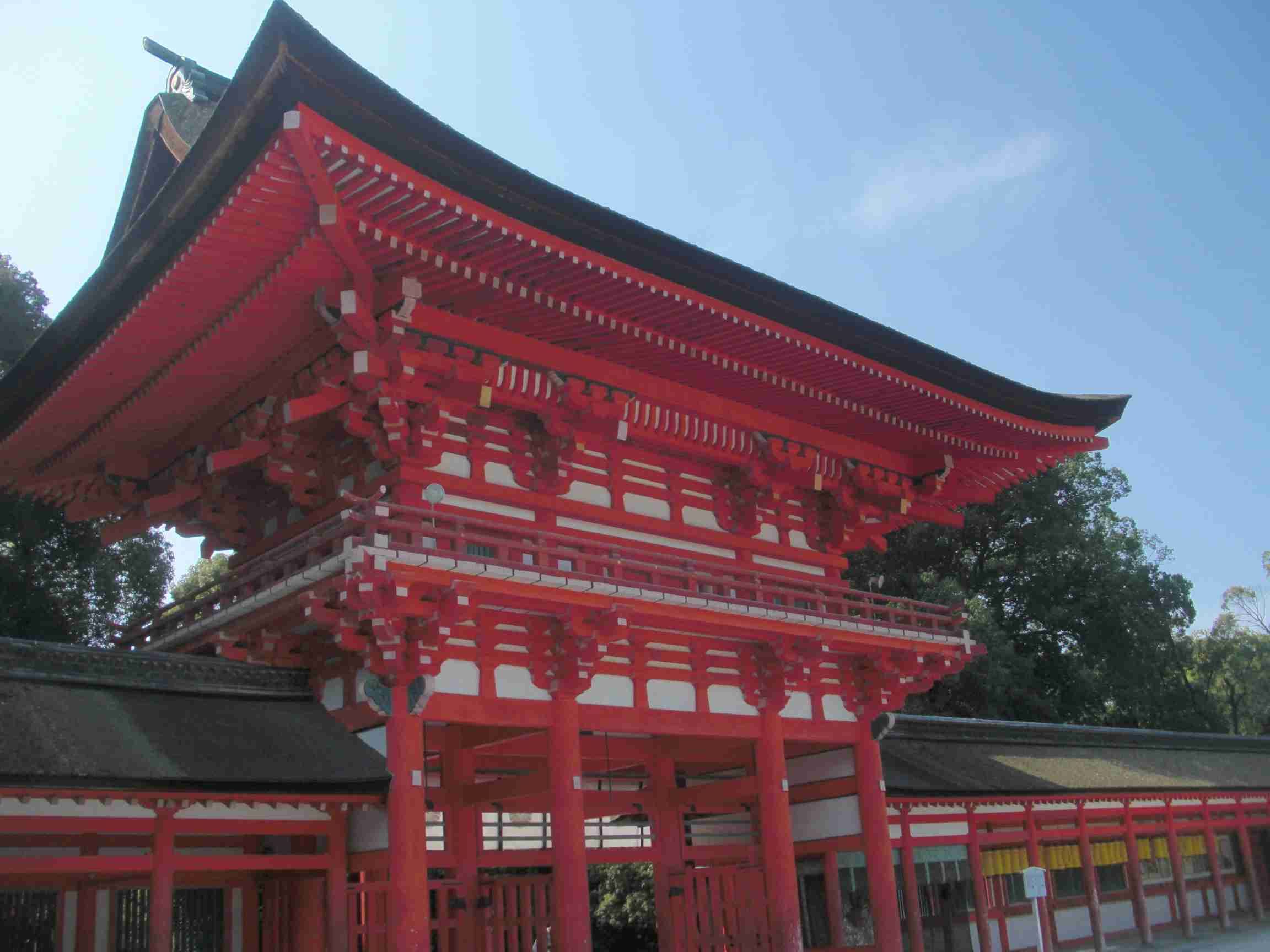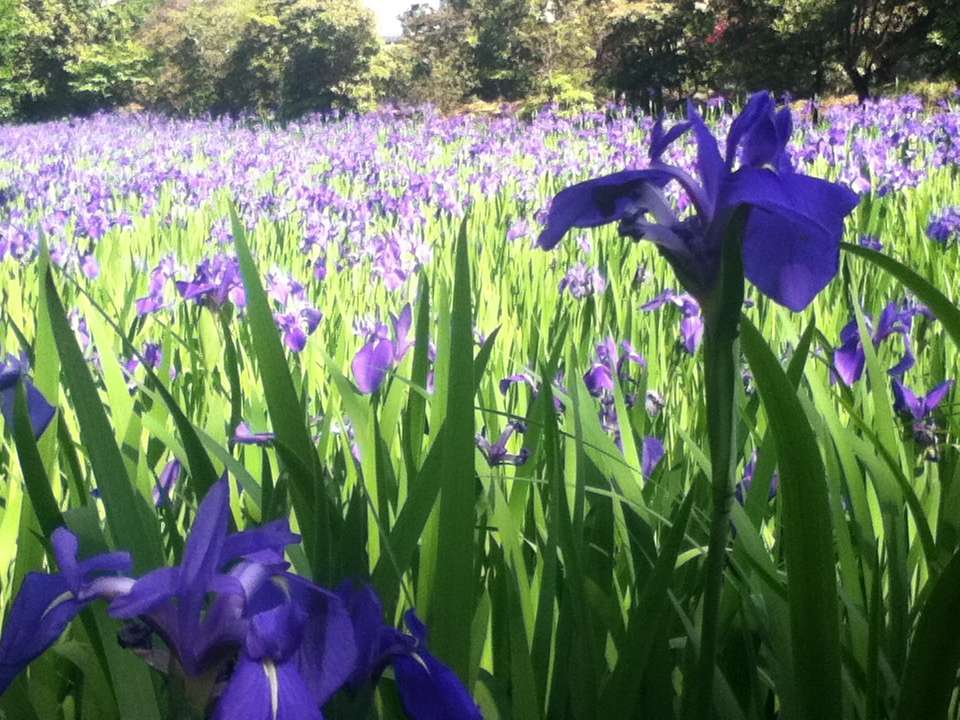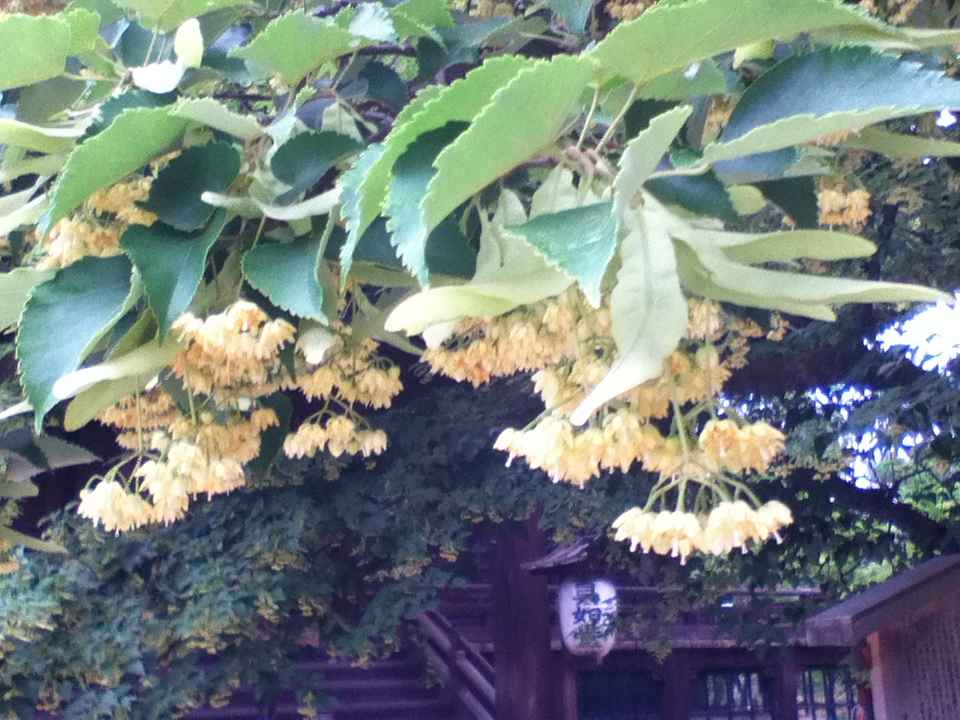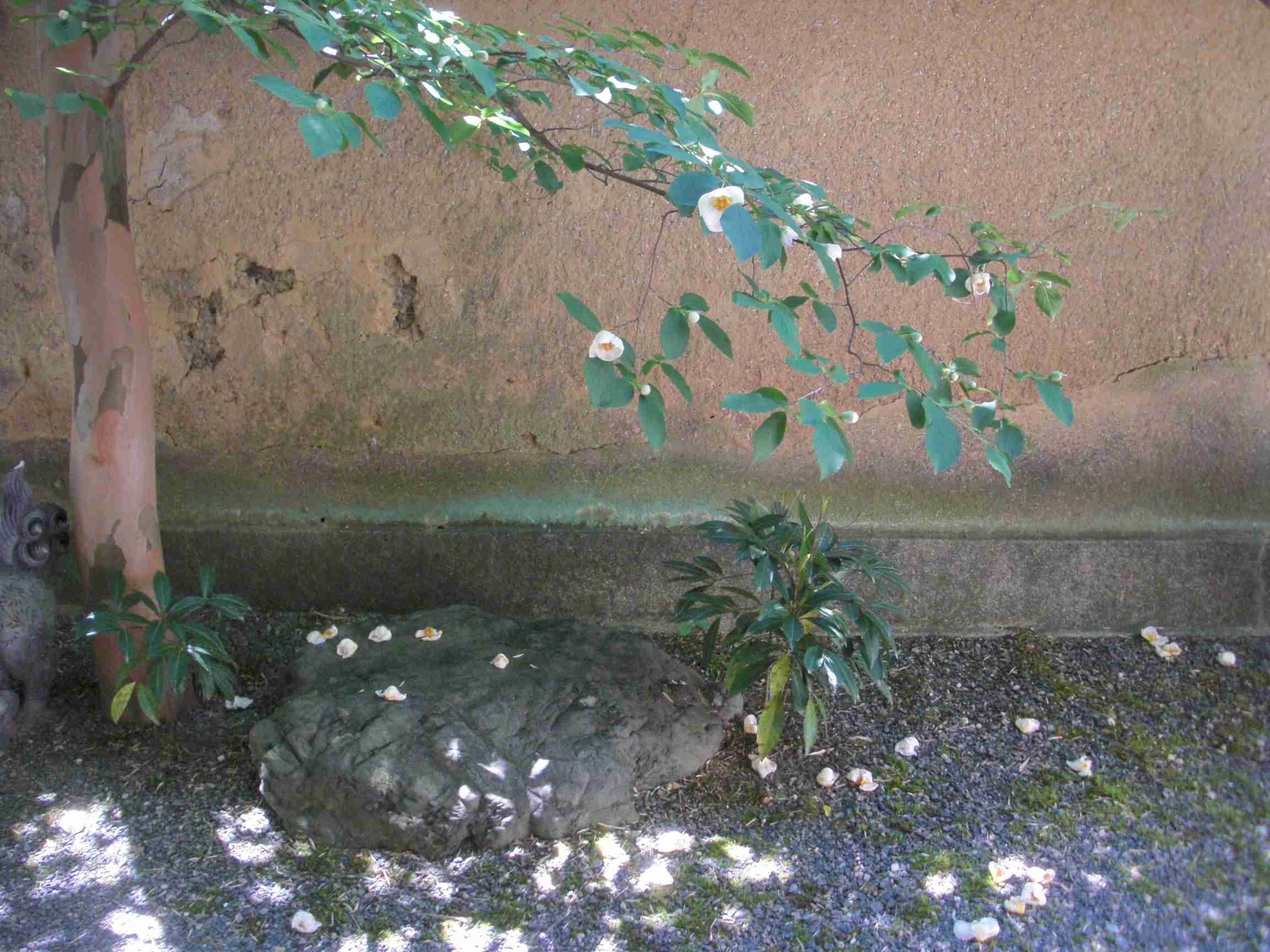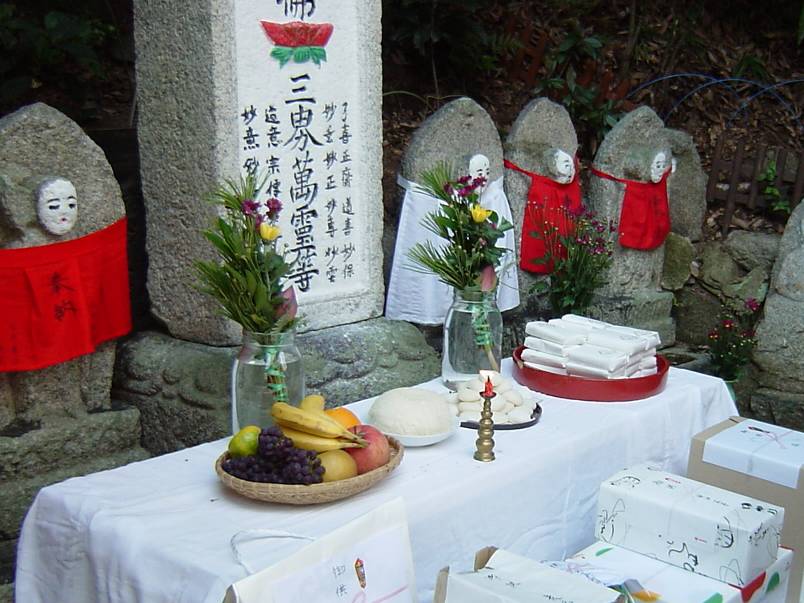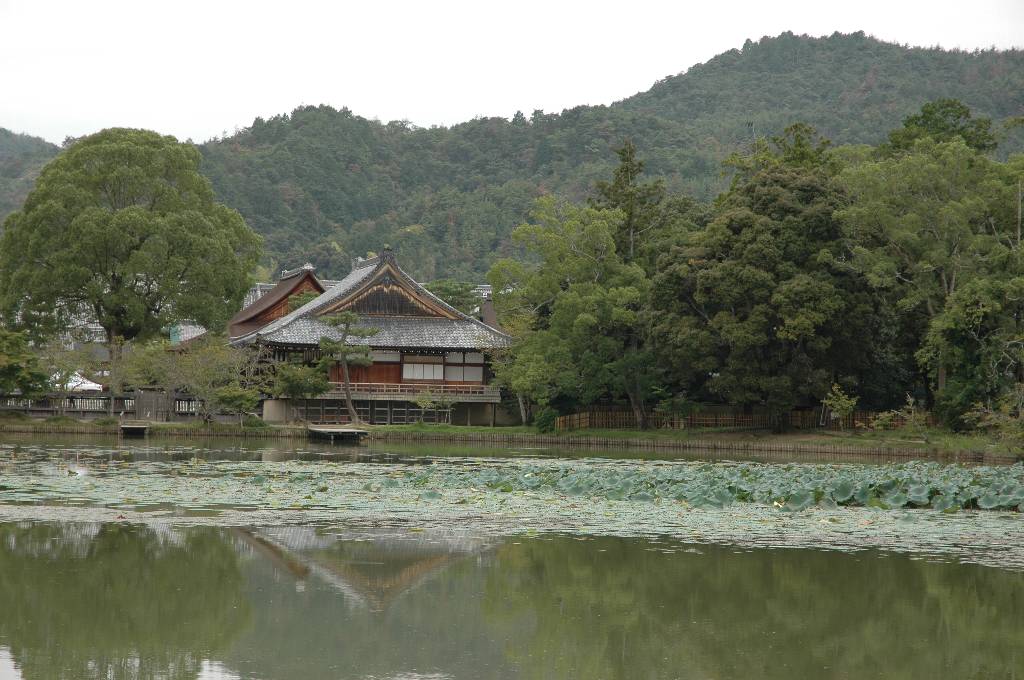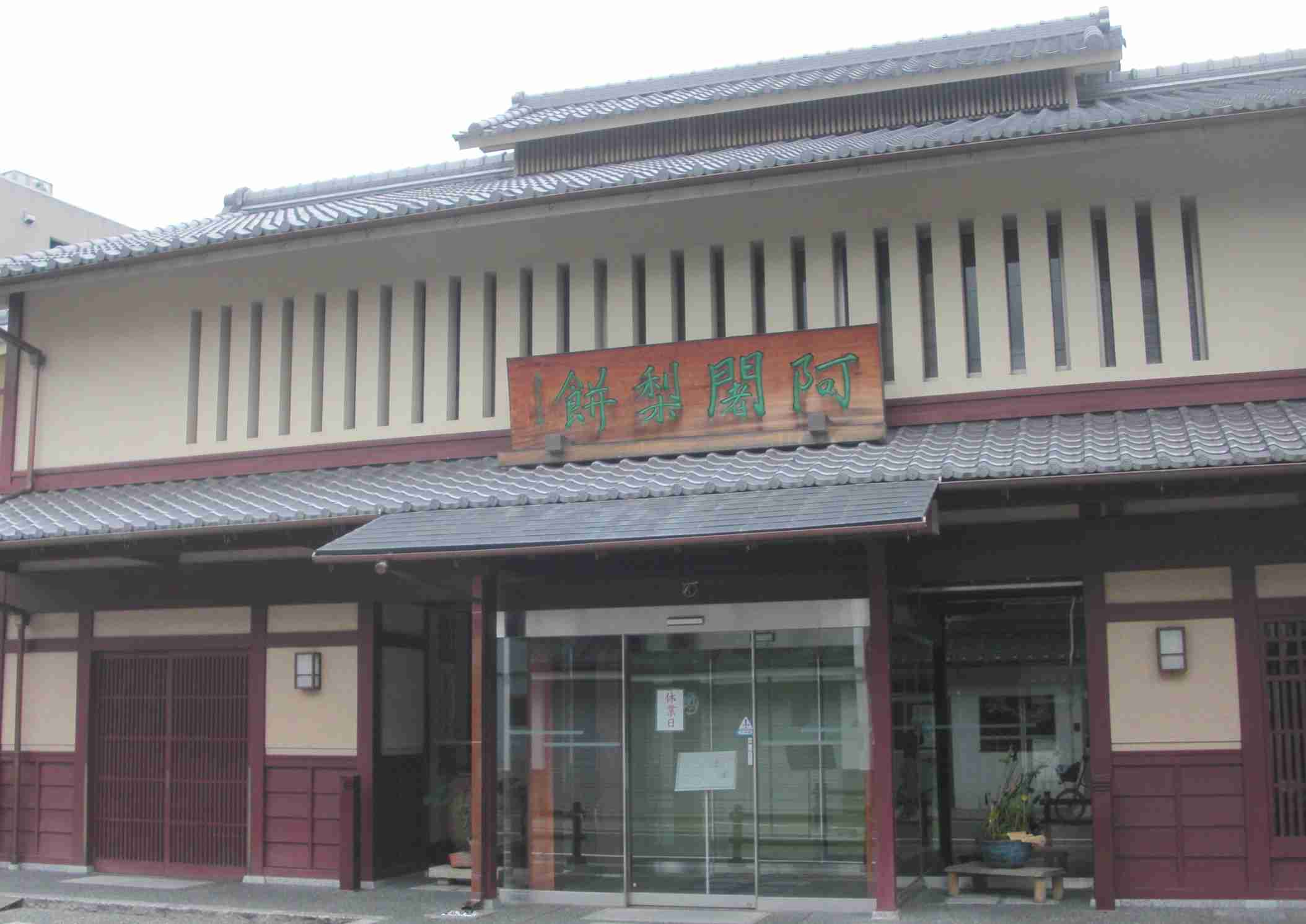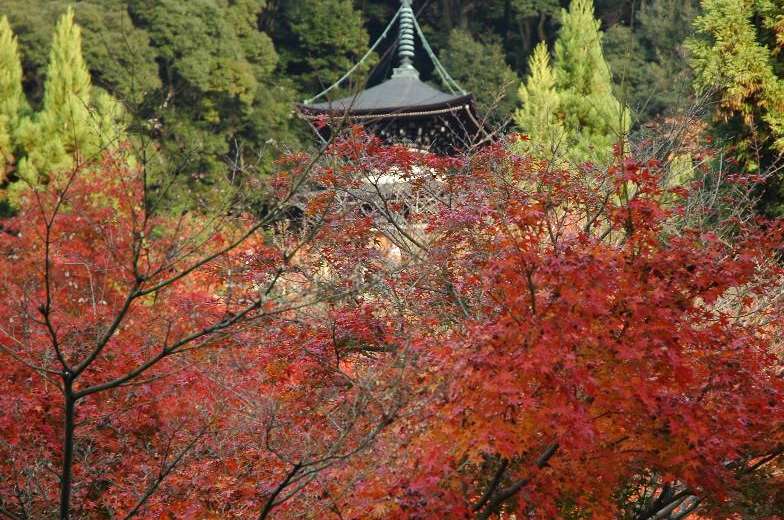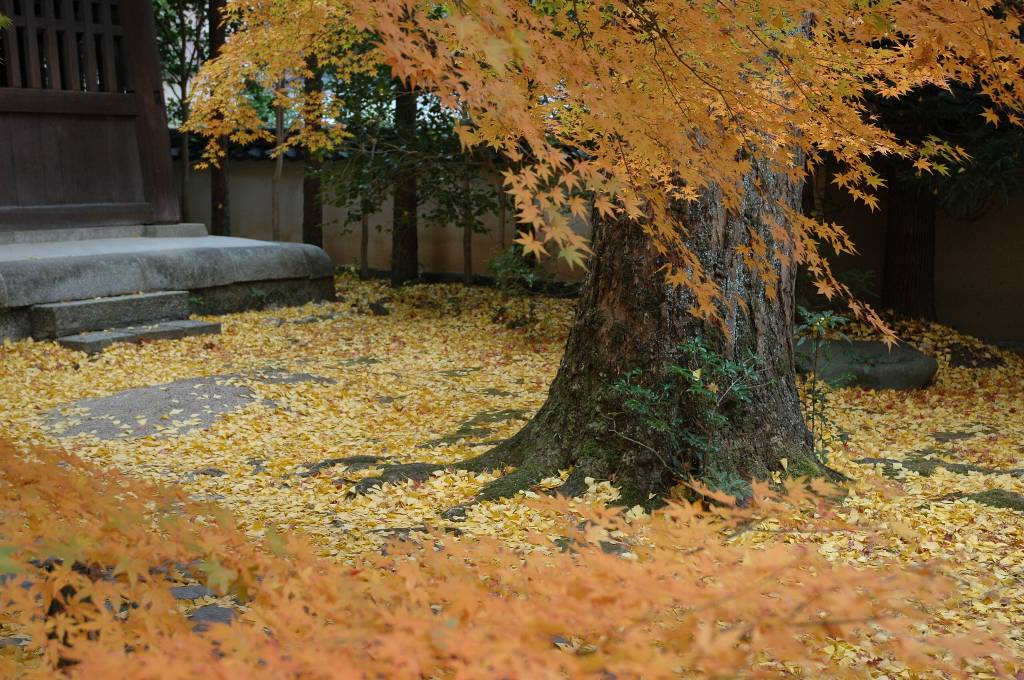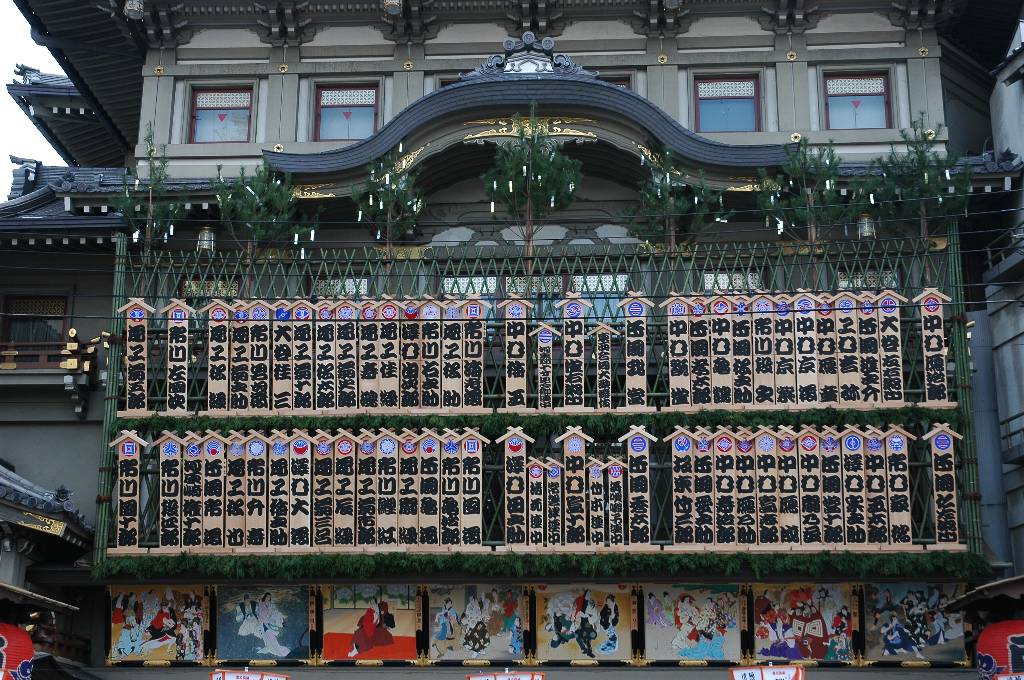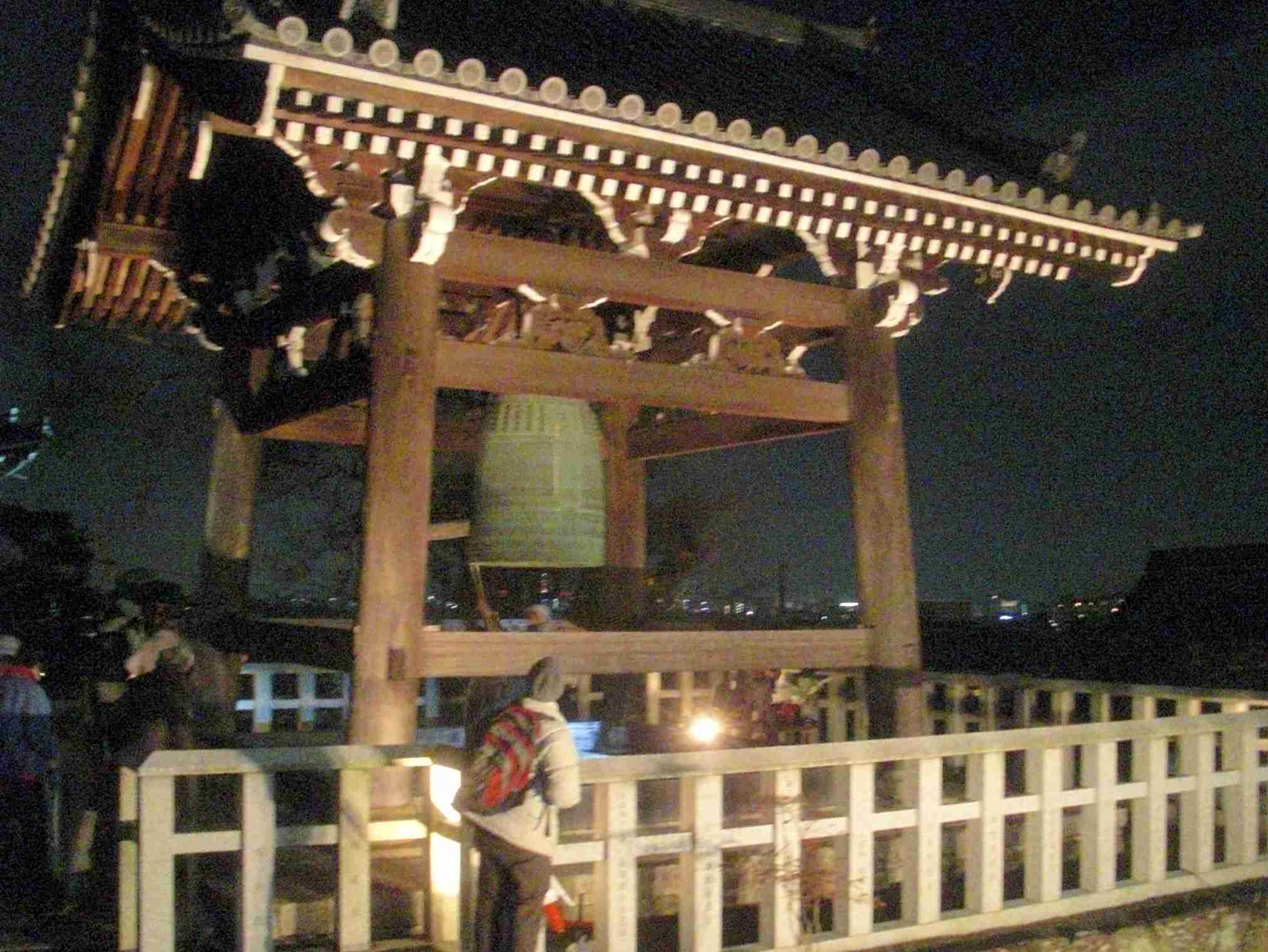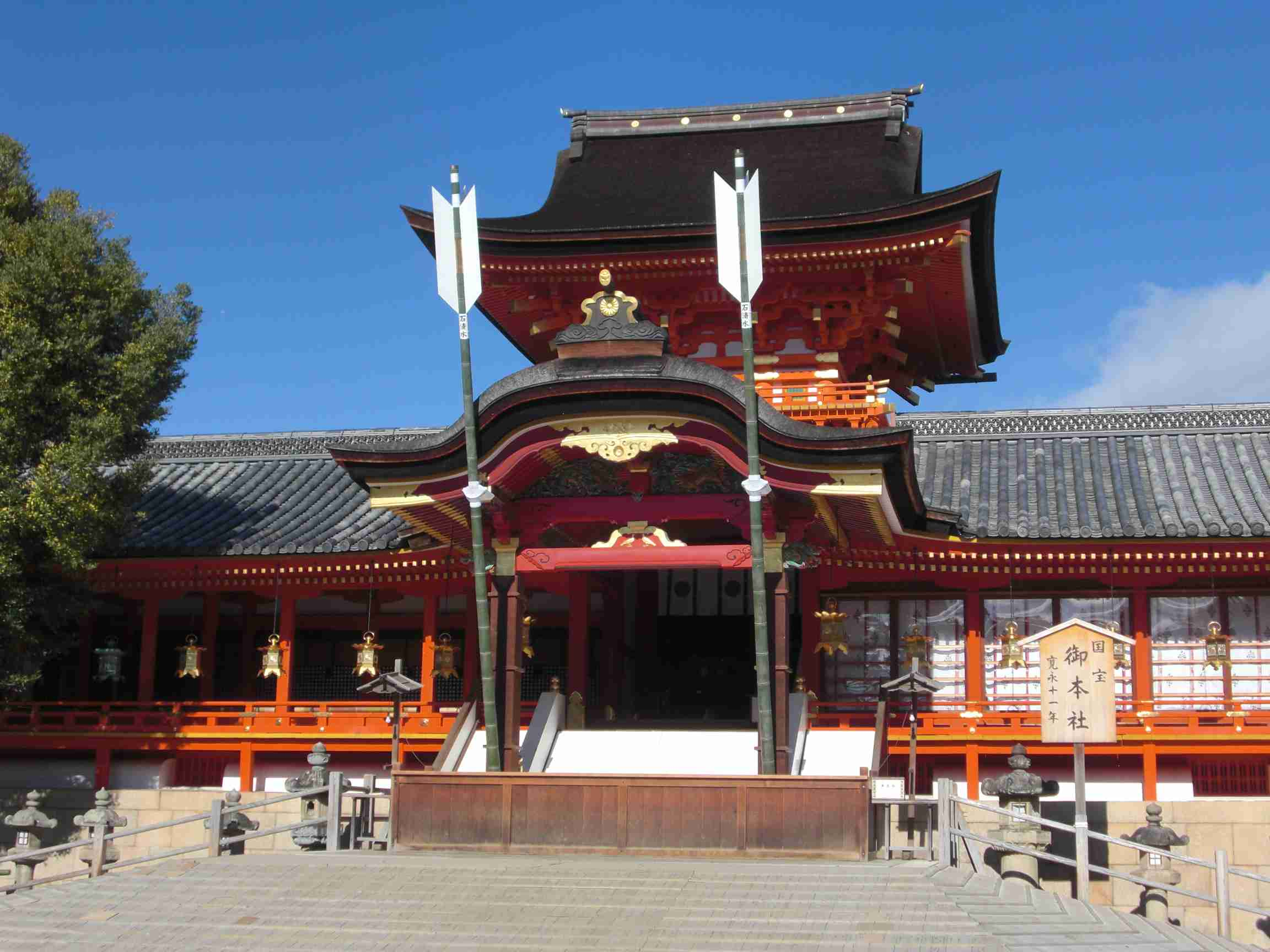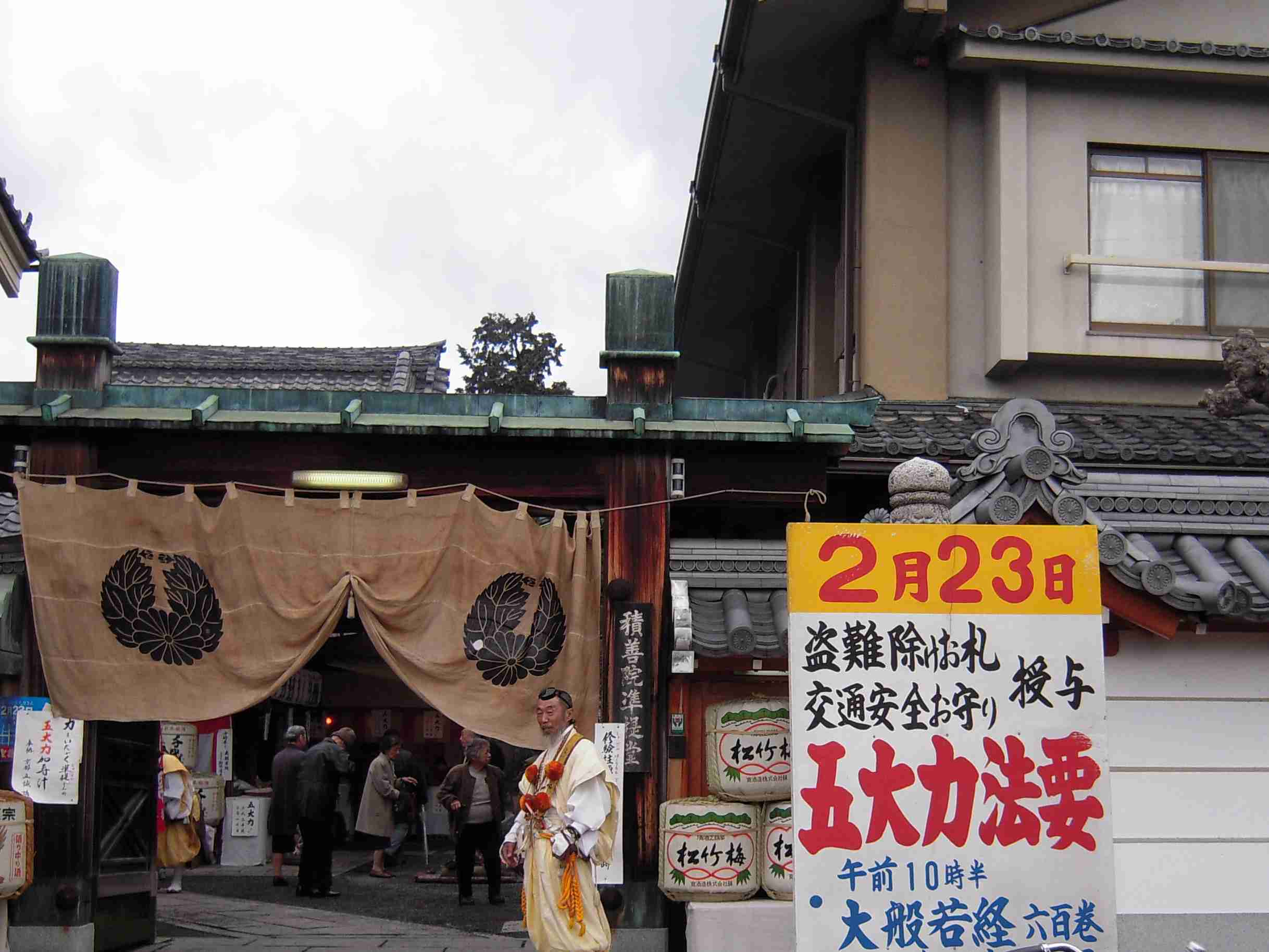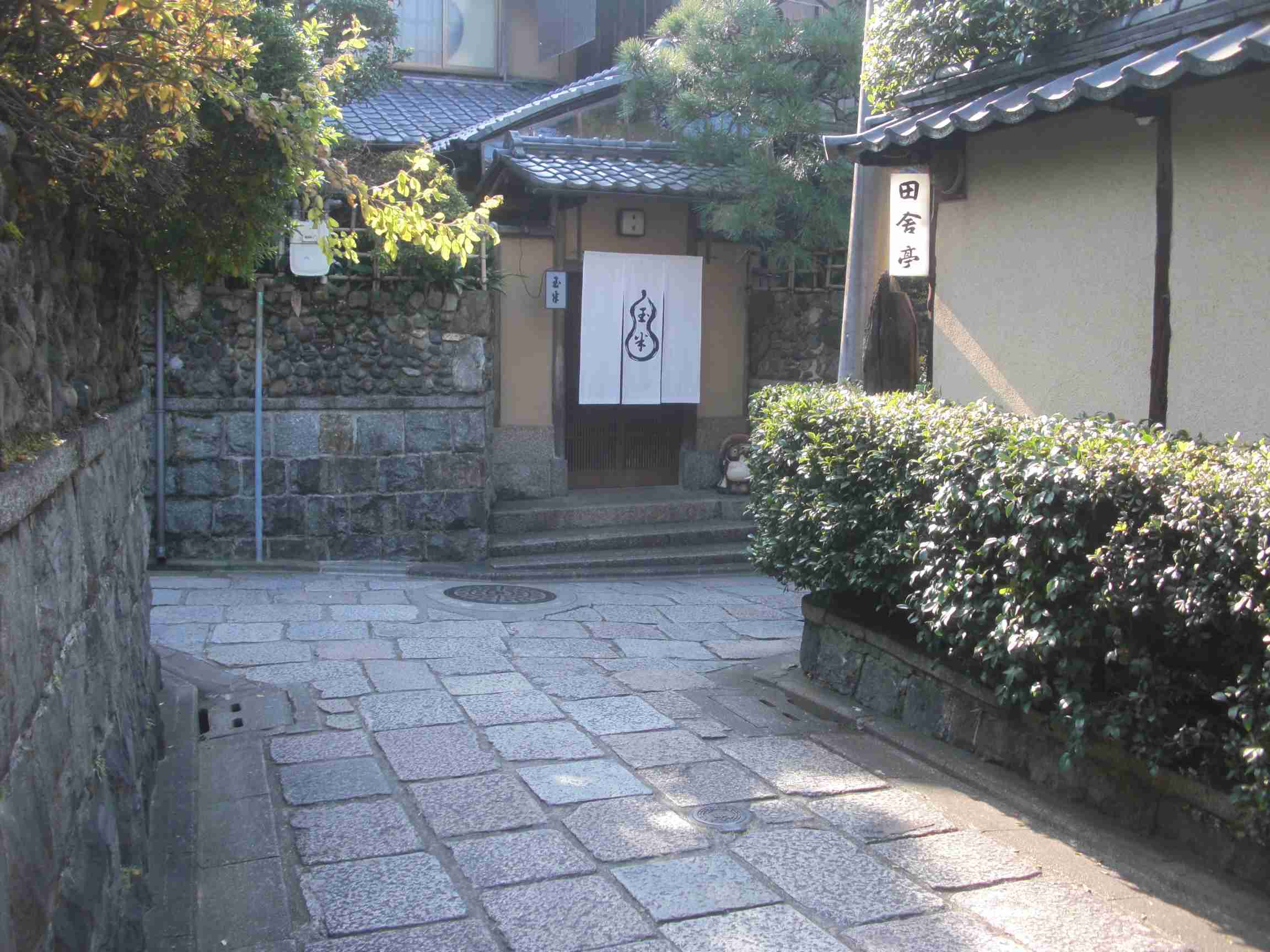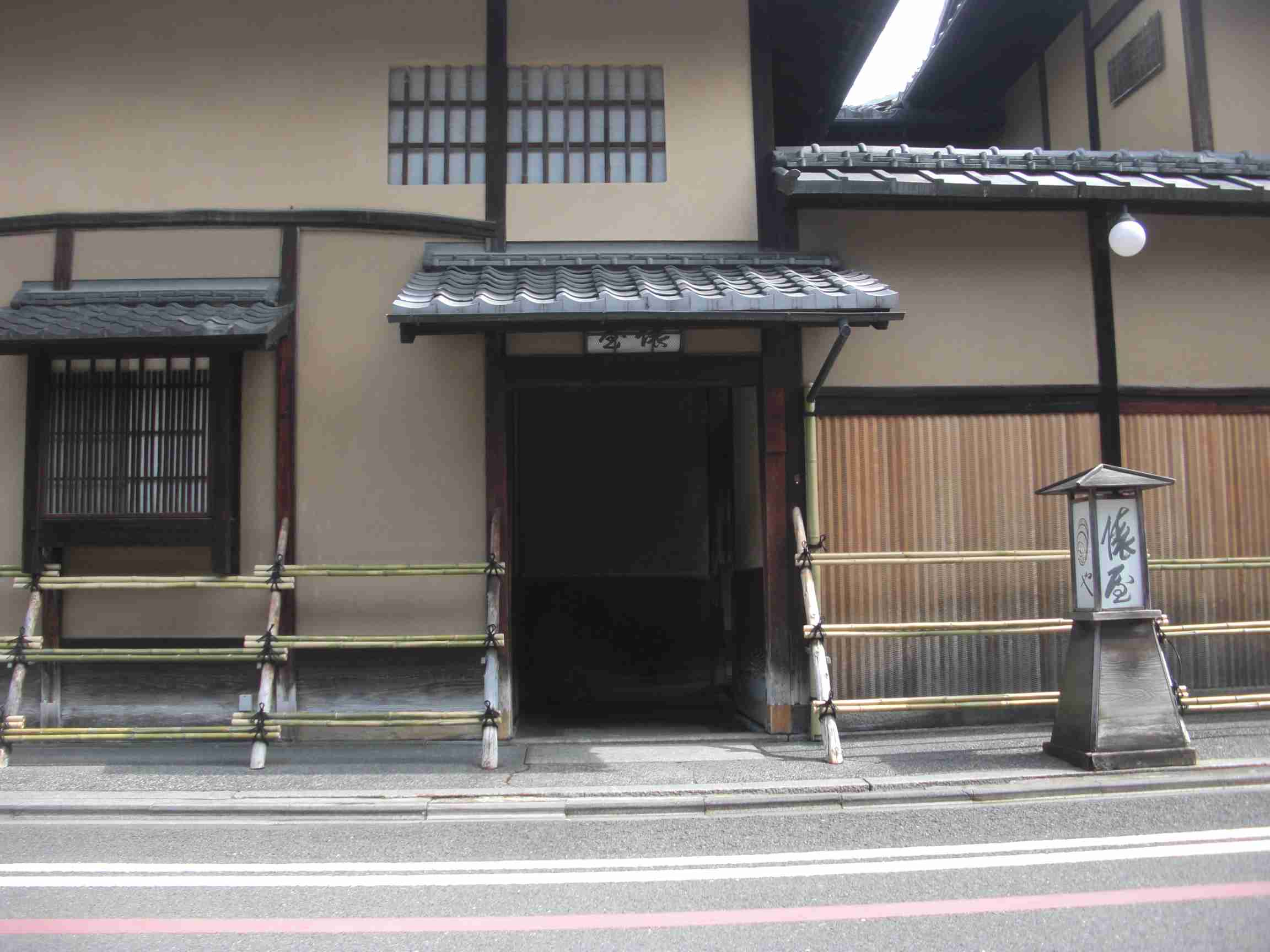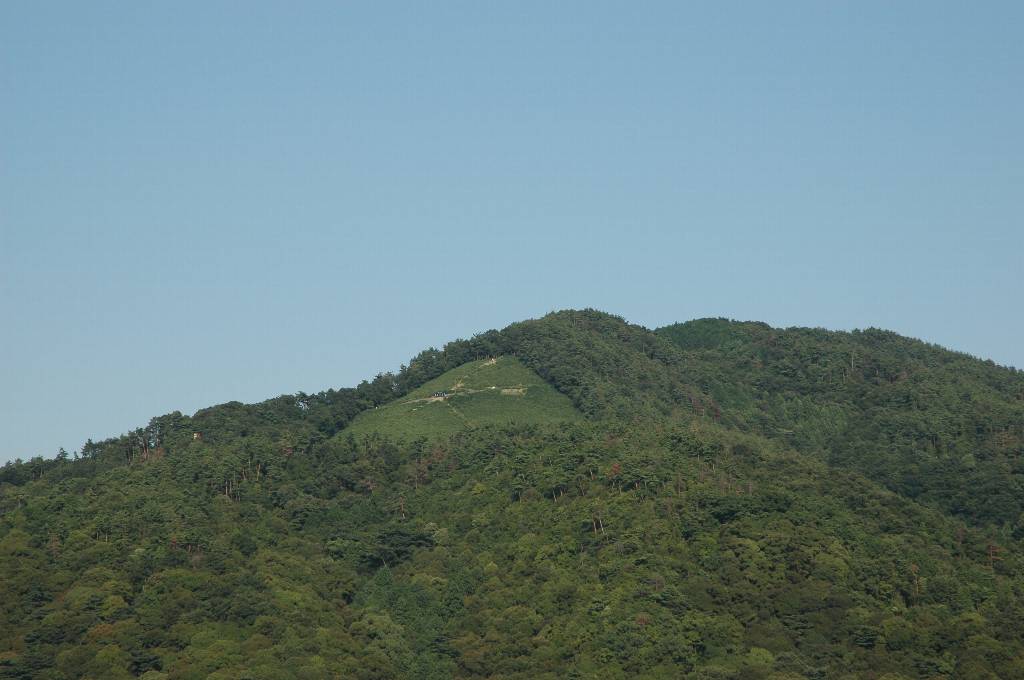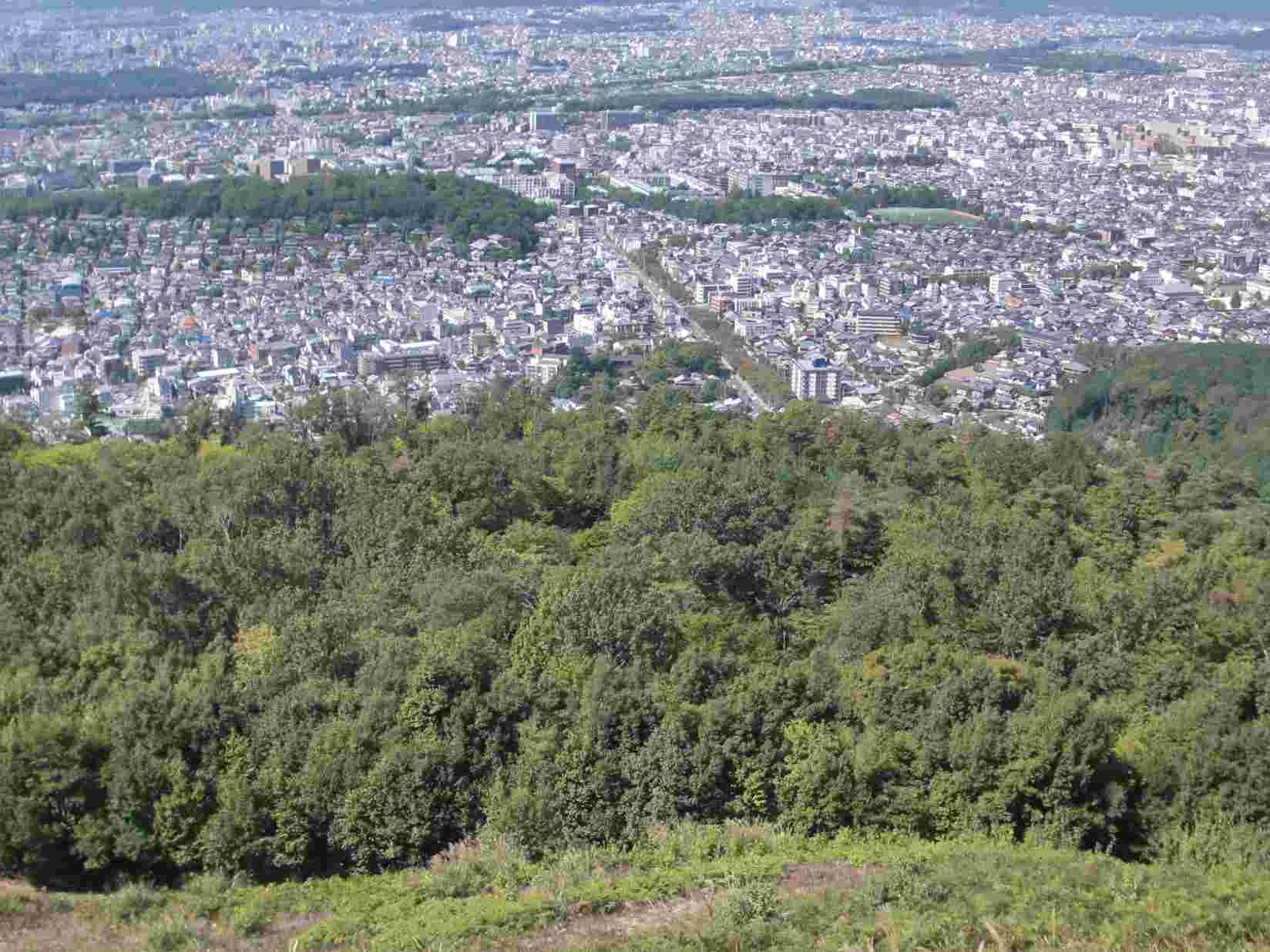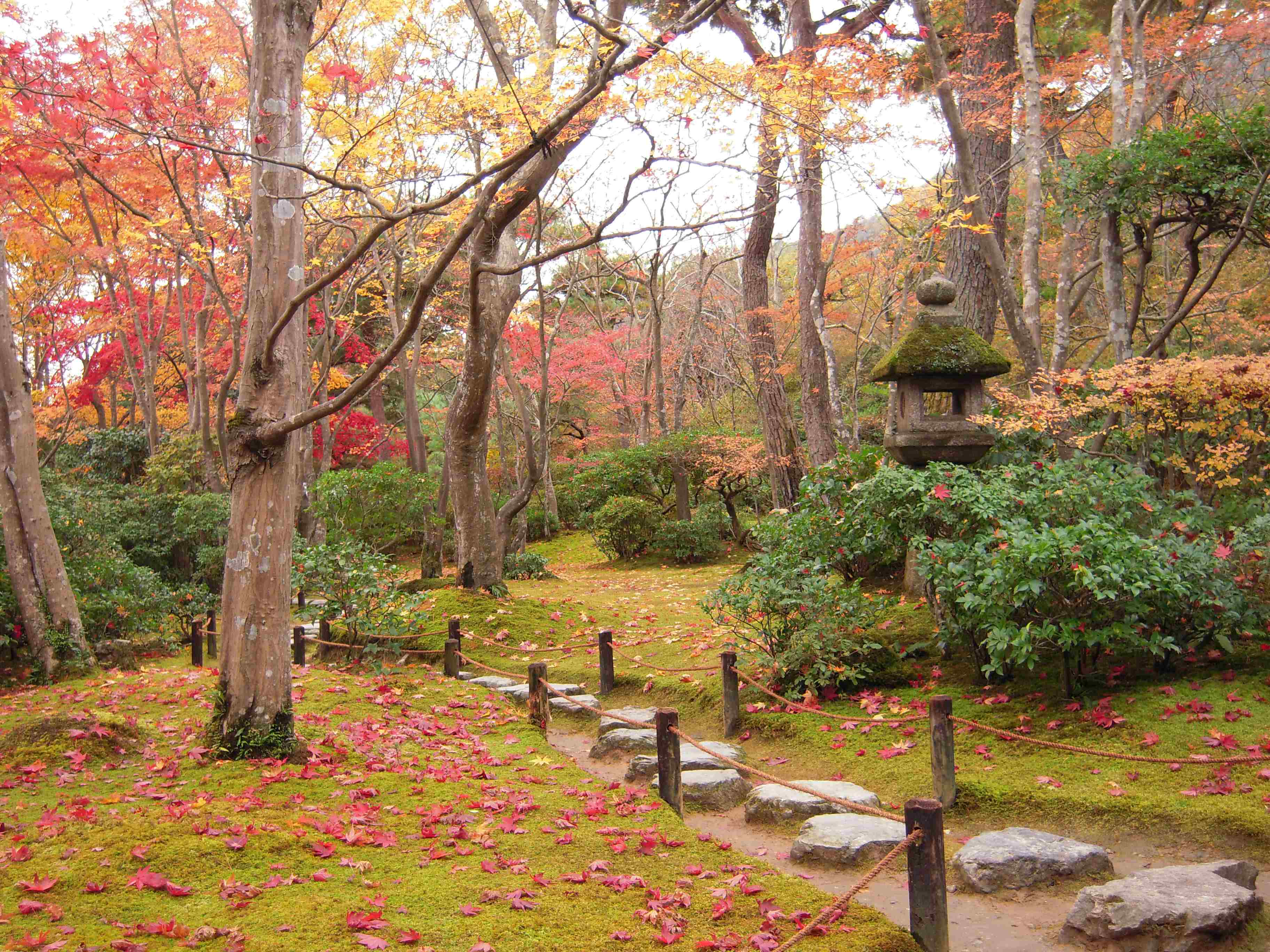Tokyo is located at the east of Japan.
Distance between Kyoto and Tokyo is about 370Km.
Tokyo is the capital for about only 150years.
- 2 major rivers which flow from north to south at east end and west end.
- Yet another river = Lake Biwa Canal
- Low mountains which are surrounding Kyoto.
- So many Buddhist Temples are in Kyoto.
- A few samples of Buddhist Temples which are selected among so many Buddhist Temples by my favorite.
sub-temple 'Kohou-an' (in Daitoku-ji) Mansyu-in temple 
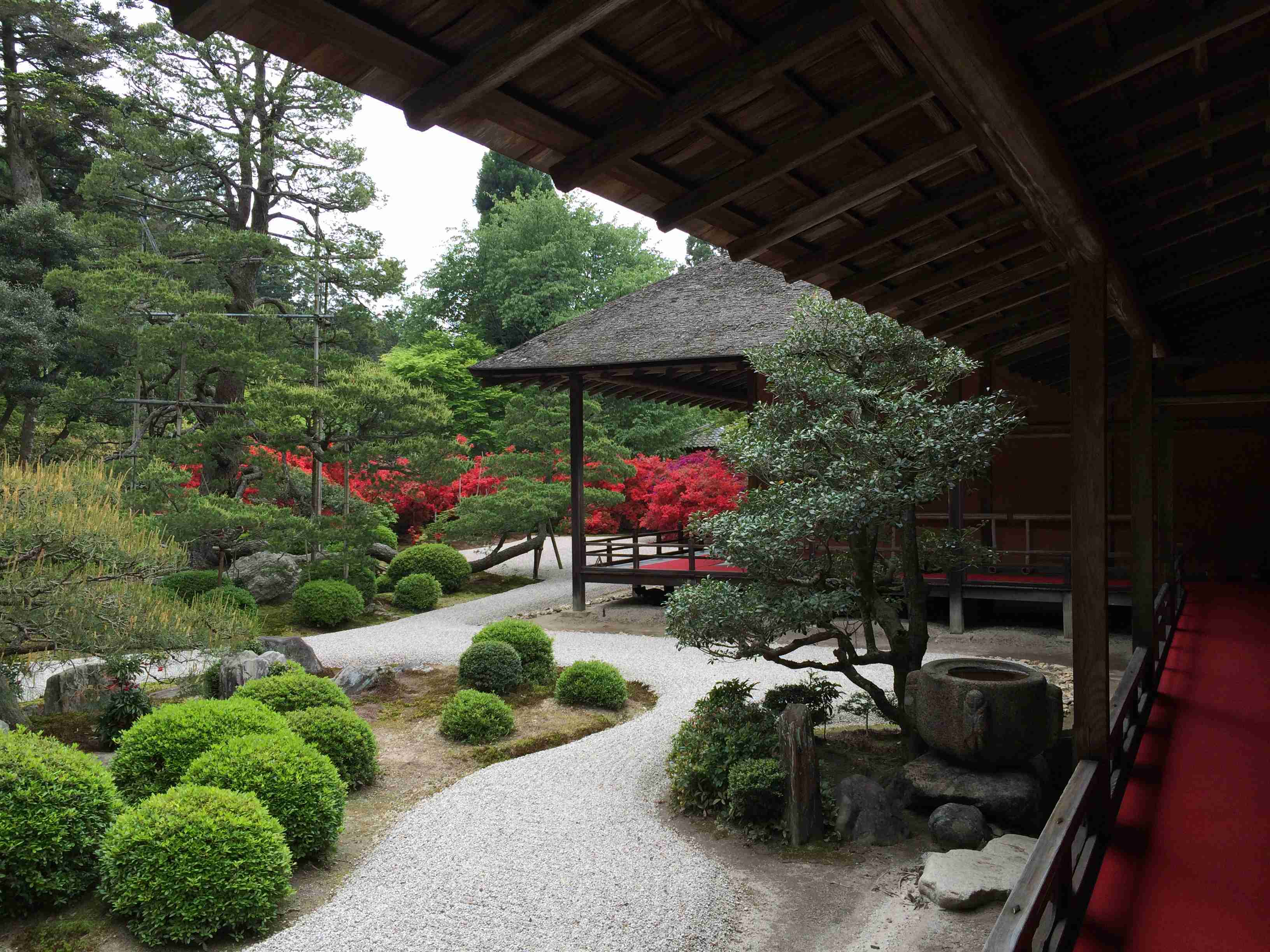
Photo is entrance called 'kuri'. located at north-east area (Kitayama-Shirakawa St.). 'Shoji Lighting' and Stone-lantern are wonderful. You can pilgrim at only special Exhibition week. You'd better to pilgrim in azelea season (May) and observe Stone-hand-bowl of owl. Honen-in temple Chion-in temple 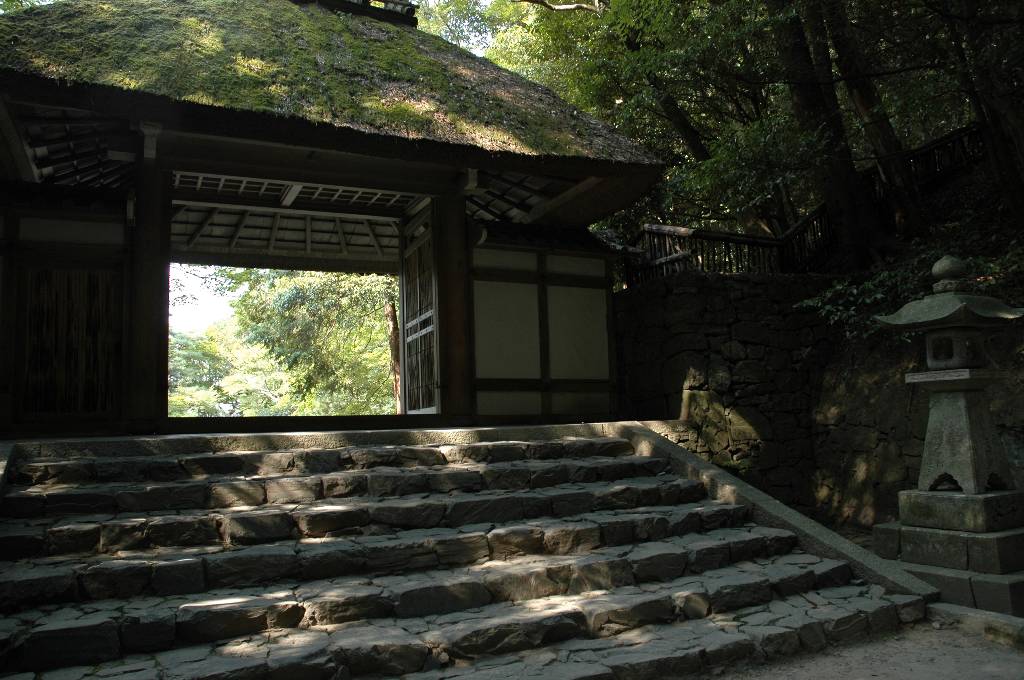
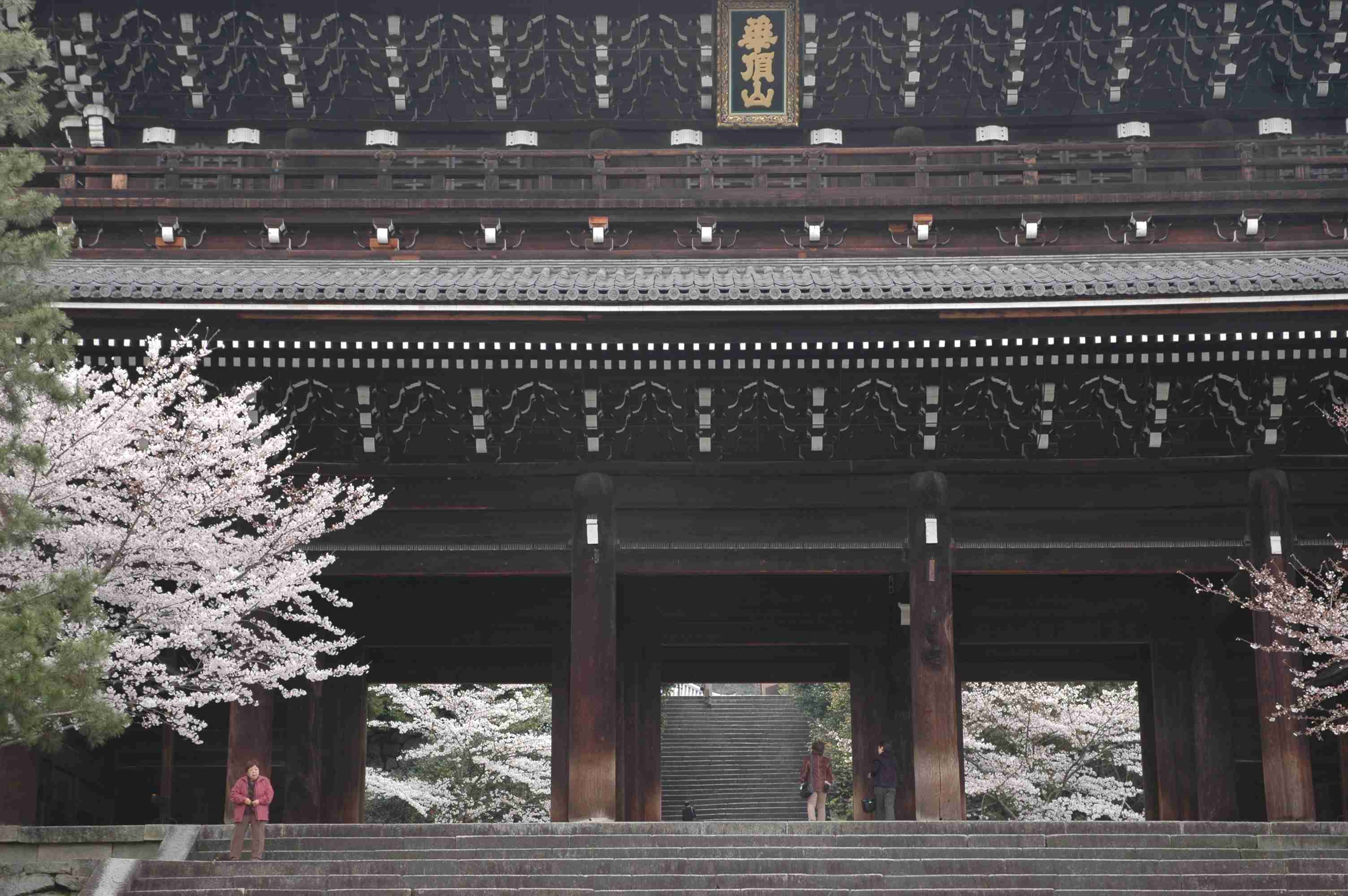
Photo is entrance gate decoratede by wood shingled roof. Photo is largest entrance gate in Kyoto. Honen is the founder of the Jodo school. Everyone can feel the spirits of Jodo school in this temple. This is the grand head temple of Jodo (Pure Land Sect.) school of Buddhism.
- A few samples of Buddhist Temples which are selected among so many Buddhist Temples by my favorite.
- Many Shinto Shrines are in Kyoto, too.
- The next 2 Shinto Shrines are most famous.
- For detail, pls refer 'Taxonomy of Shinto Shrines'
Heian-jingu Shrine Kitano Tenman-gu 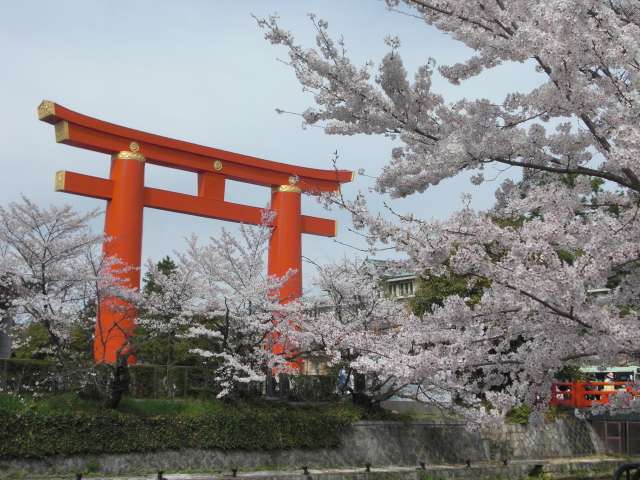
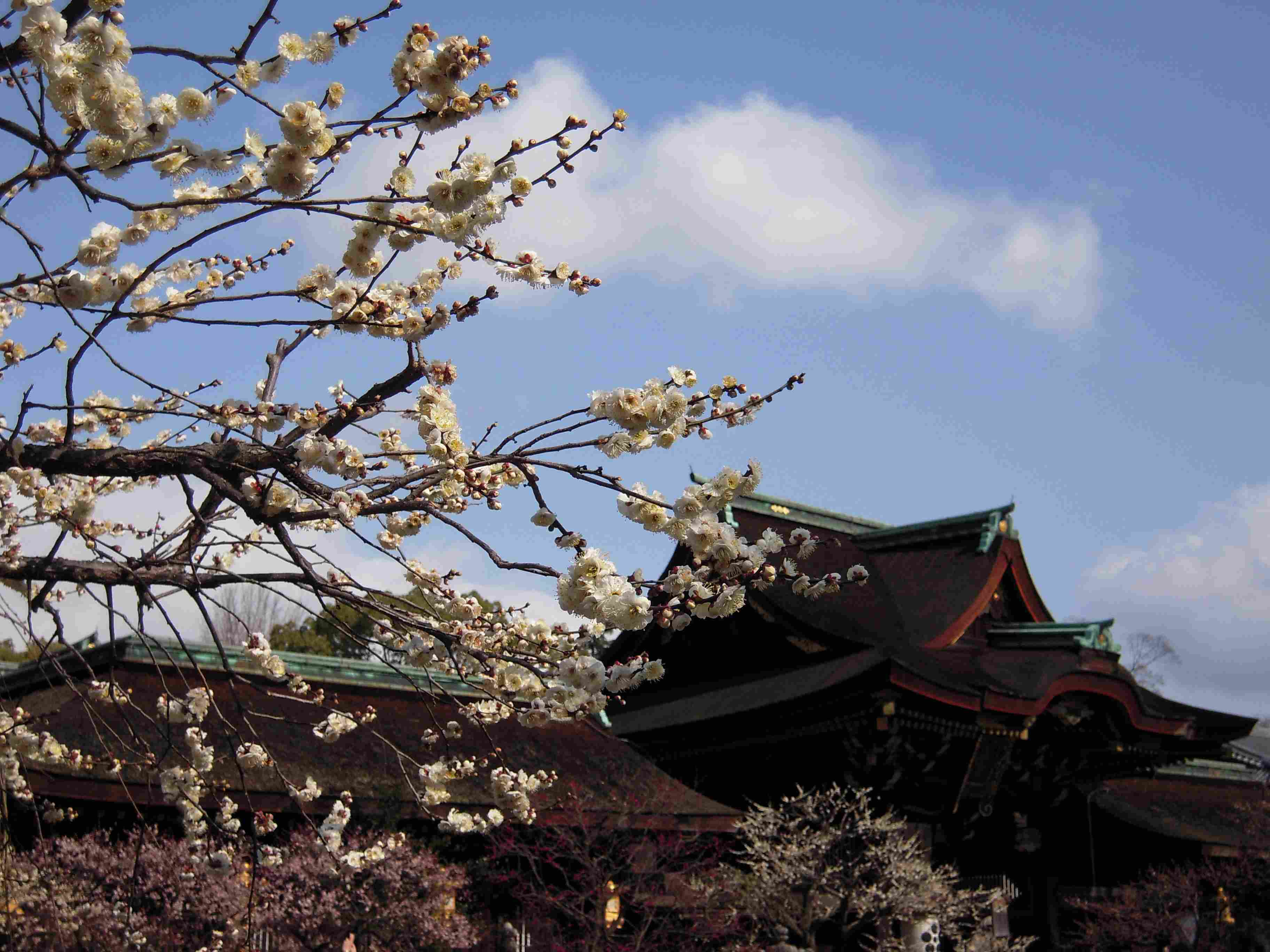
Photo is Huge Torii which is built in front of Shrine. Photo is 'Sanko-mon Gate'. You'd better to pilgrim in cherry blossoms (April) or iris (May) season. You'd better to pilgrim in plum season (Febrary-March).
- Emperer's Garden
- In current, Imperial Household Agency has 5 visitable facilities (2 palaces and 3 villas), and 4 /5 facilities are located in Kyoto.
- These are necessary to apply for visit in advance.
Shugaku-in Rikyu Imperial Villa Katsura Rikyu Imperial Villa 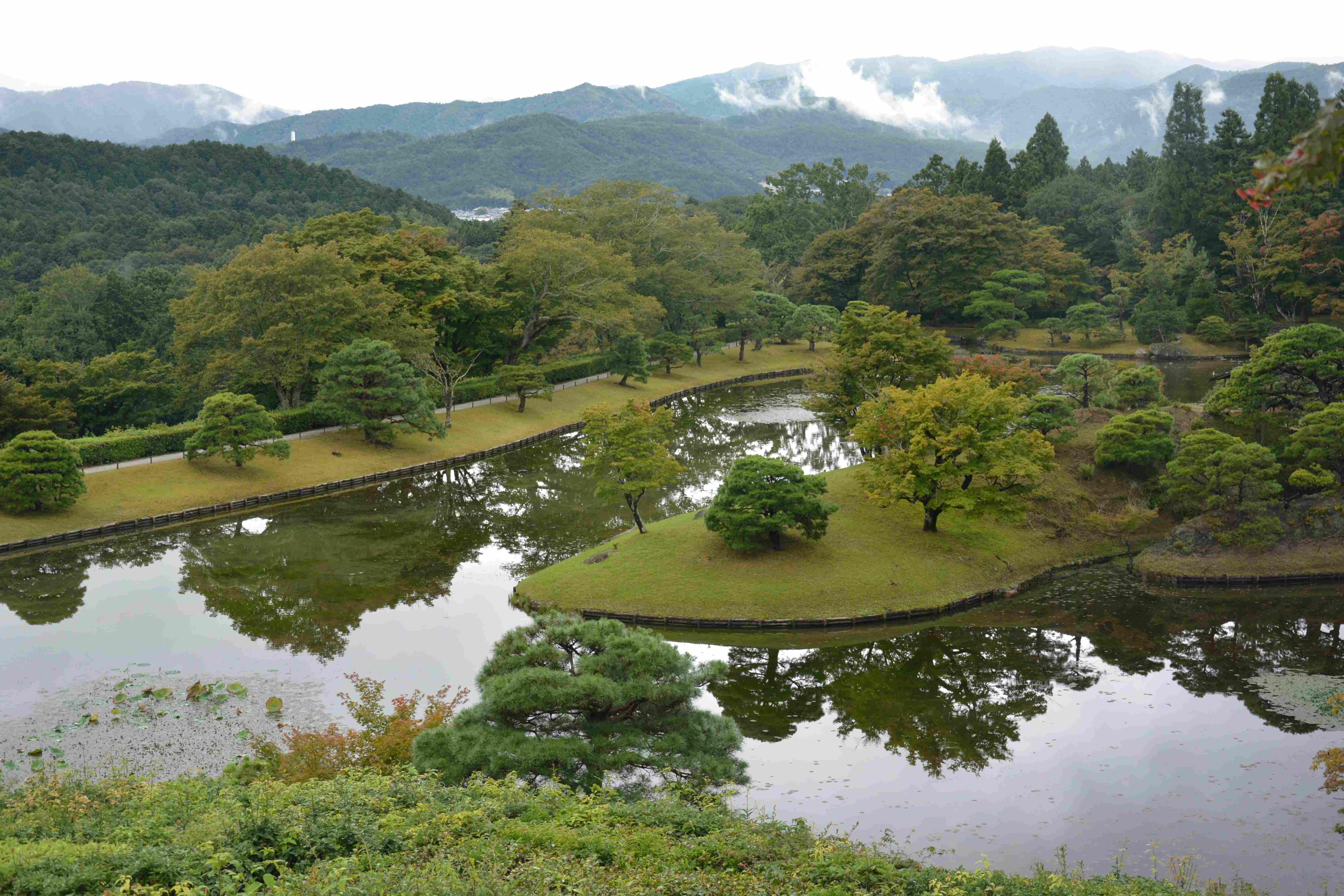
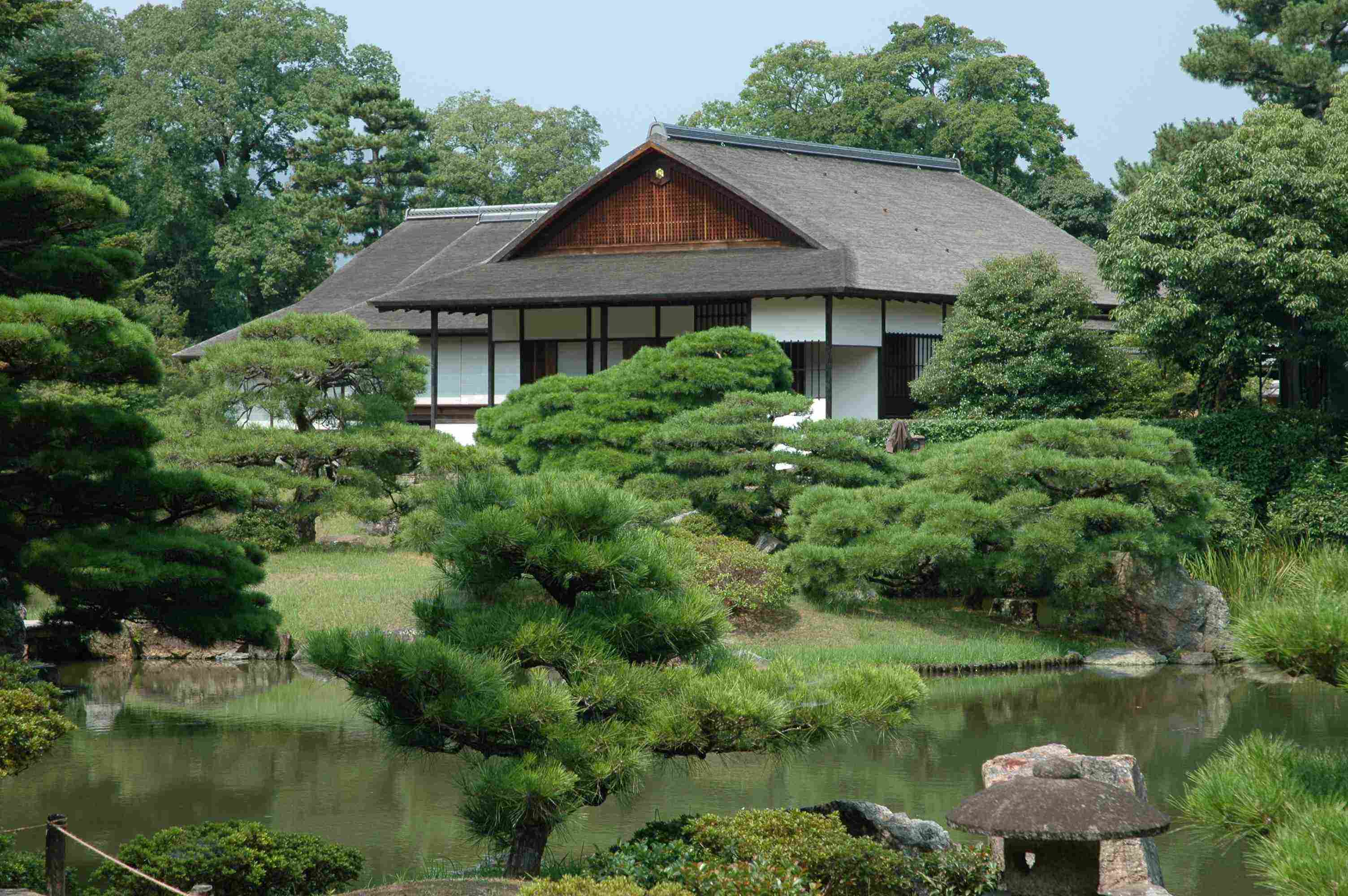
located at north-east area (beyond Kamo-gawa river) located at south-west area (beyond Katsura-gawa river) This is the most magnificent garden with plentiful Japanese beauties in Japan. Architect Bruno Taut said 'It makes me almost cry, it is so beautiful' at his first visit.
- In current, Imperial Household Agency has 5 visitable facilities (2 palaces and 3 villas), and 4 /5 facilities are located in Kyoto.
- Garden in Buddhist Temples.
- The next 2 gardens are most famous.
- The next 2 gardens are most famous.
- Spring (March - May)
- Various flowers bloom in Spring.
- Various flowers bloom in Spring.
- Summer (June - August)
- 3 traditional festivals are held in Summer.
Kyoto Gion Festival (July) Gozan Okuribi (five mountains sending off fire) (August) 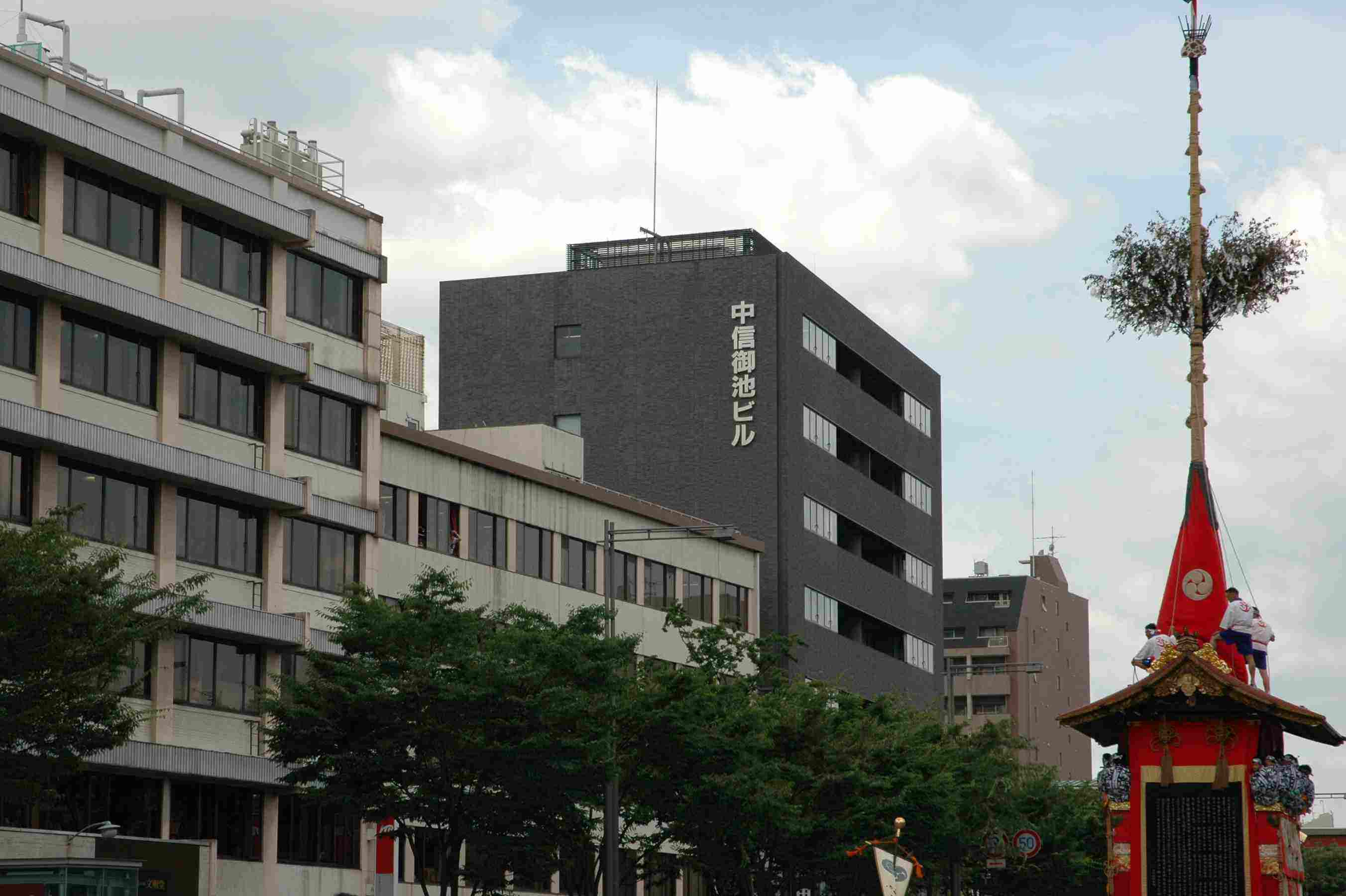
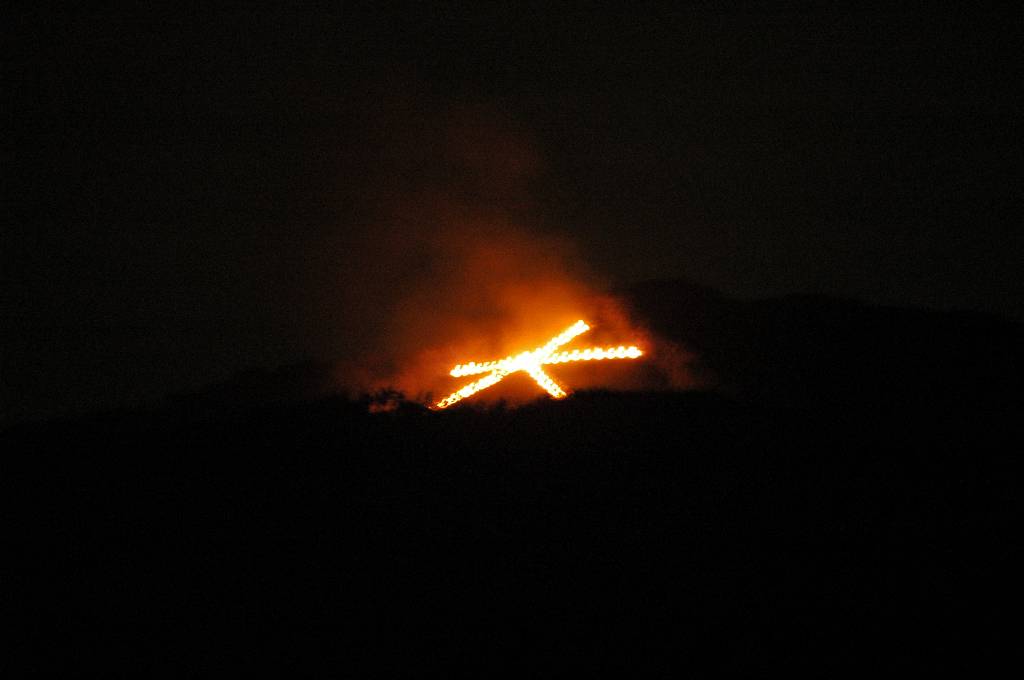
Gion-matsuri is held between allover July. Gozan Okuribi are held at August 16 from 8 pm. Most attractive Yamahoko float procession (above photo) are held at July 17 and 24. Gozan light up bonfires (lines of torches arranged in the shape of Kanji) on 5 mountains surrounding Kyoto.
- 3 traditional festivals are held in Summer.
- Autumn (September - November)
- It is a good season for sightseeings in Autumn.
- It is a good season for sightseeings in Autumn.
- Winter (December - February)
- There are many events in Winter.
- There are many events in Winter.
- Japanese Restaurants
- These are granted the Michelin three stars.
Okazaki Tsuru-ya Hyo-Tei 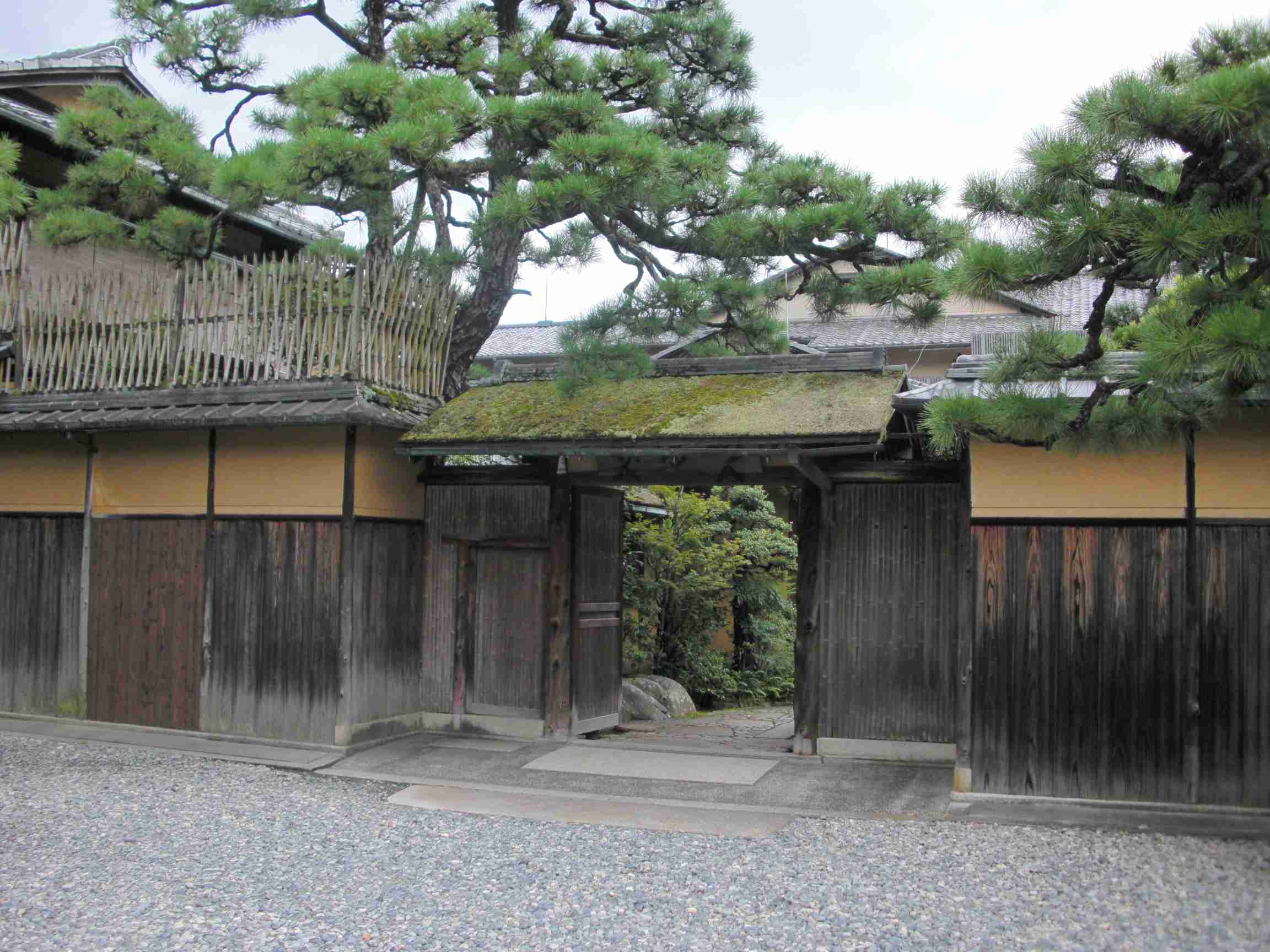
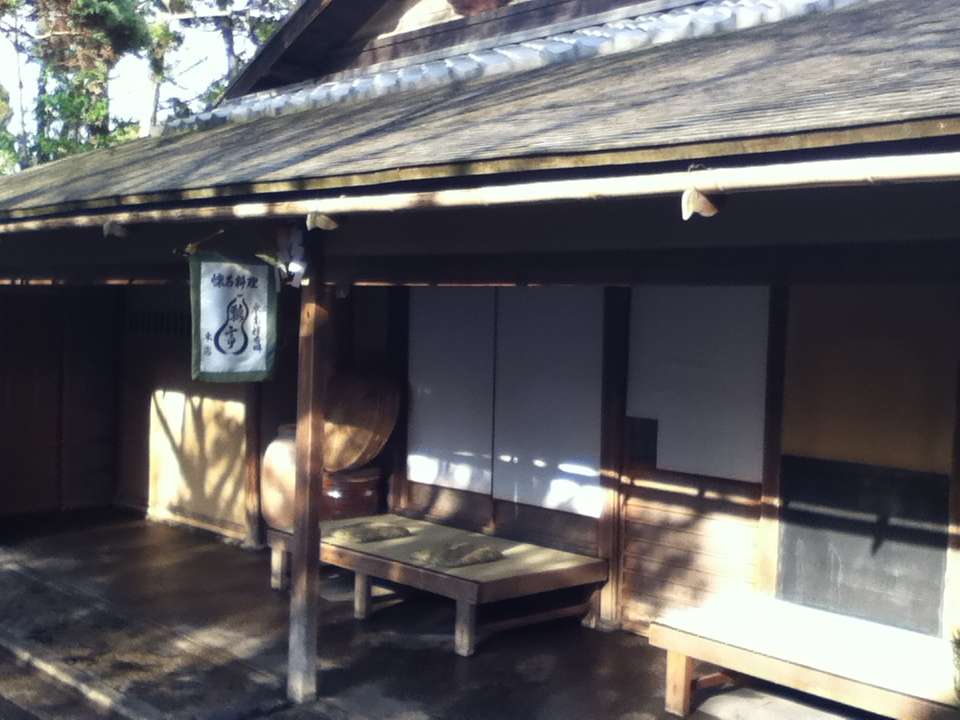
This is located at eastern Kyoto near Nanzen-ji. This is located at eastern Kyoto near Nanzen-ji. This is one of Kyoto's highest prestige restaurants. Banquet dinner party of Queen Elizabeth II was held here. This is one of Kyoto's oldest and most picturesque traditional restaurants. Soft-boiled egg is famous.
- These are granted the Michelin three stars.
- Japanese Inns
- These are granted the Michelin two or three stars.
- These are granted the Michelin two or three stars.
- A few samples of museums which are selected among so many museums by my favorite.
| Raku Museum | Kyoto City KYOCERA Museum of Art |
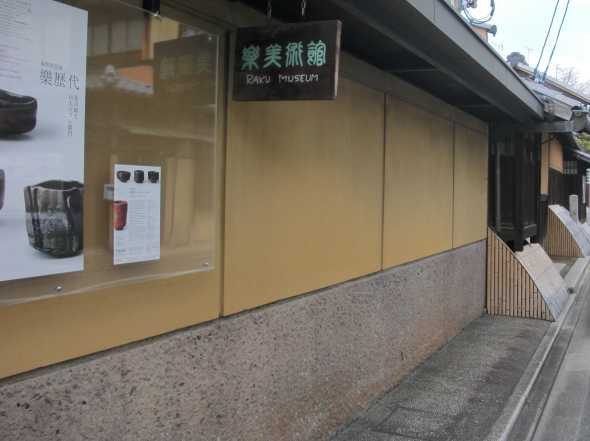 | 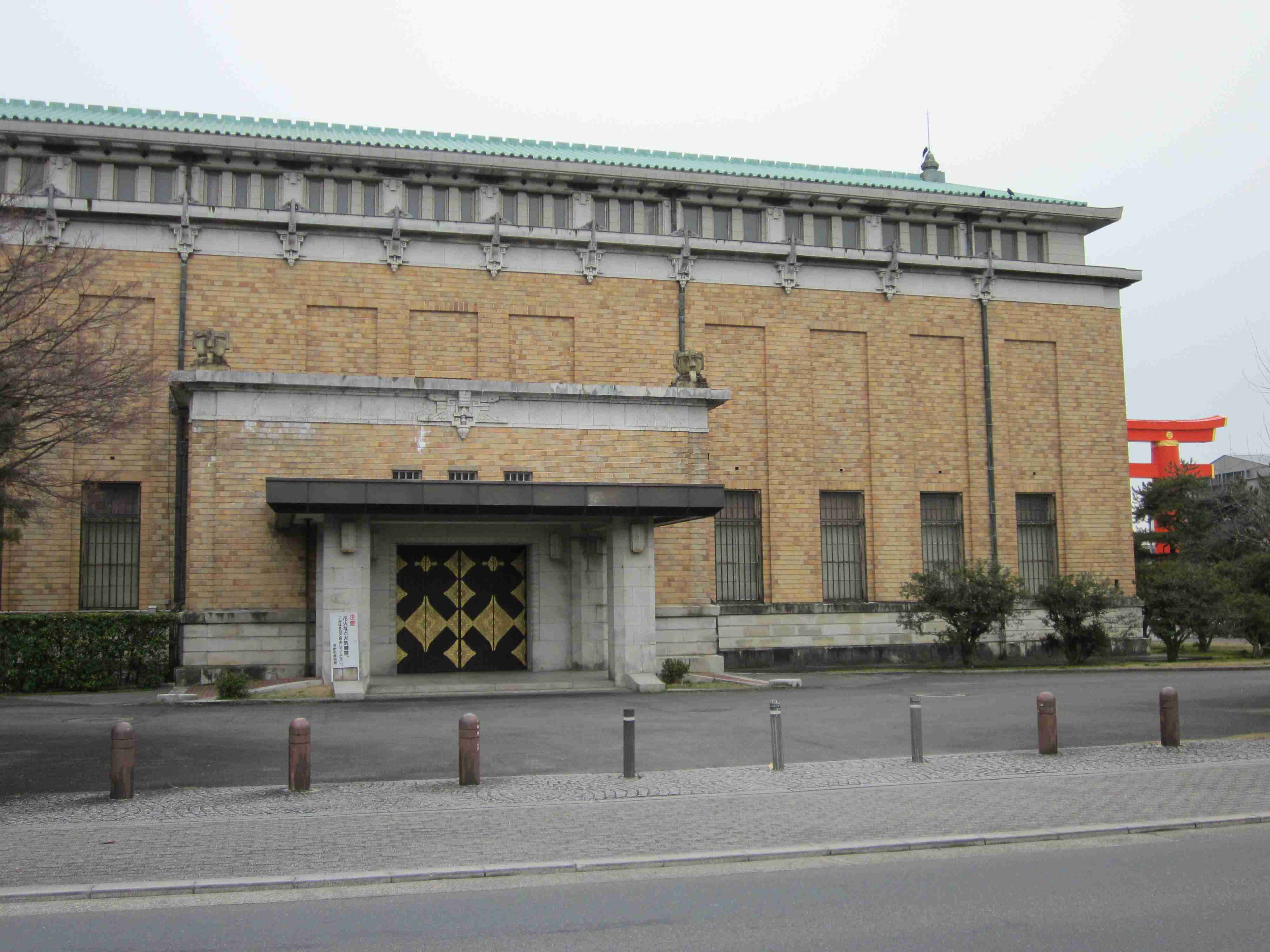 |
| located at central Kyoto (Aburano-koji Ave.). | located at eastern Kyoto near Nanzen-ji. |
| You can enjoy famous raku-yaki style of pottery which were begun by master 'Chojiro' at 16th century. | This was opened in 1933 as the second large public art museum in Japan and are designed with Japanese tastes. |
| Kawai Kanjiro's House | Yurinkan Museum |
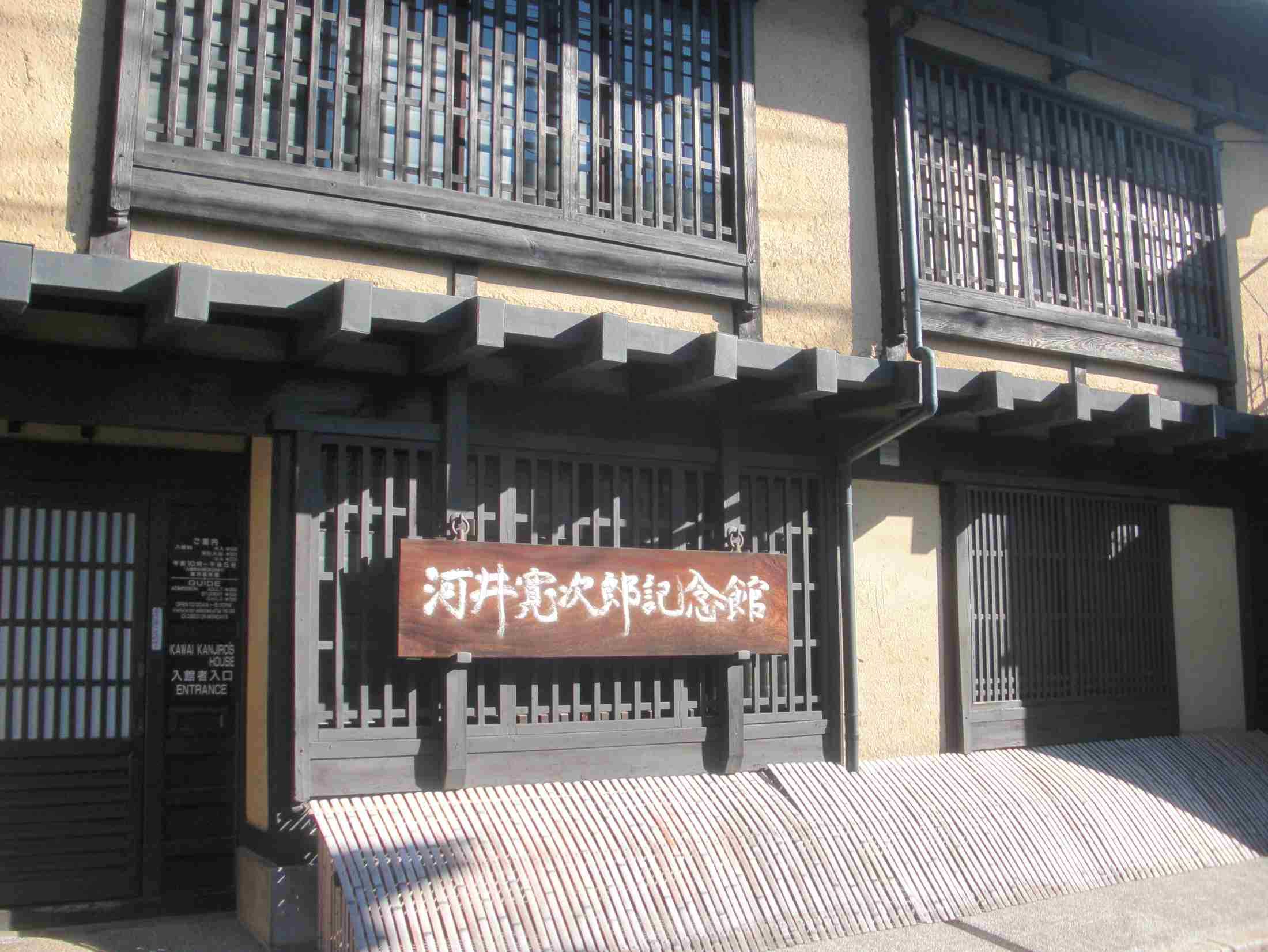 | 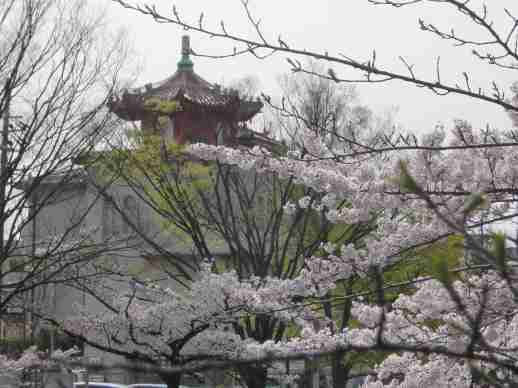 |
| located at central Kyoto near Gojo Street | located at south end of Okazaki Park. |
| Kanjiro Kawai declared the 'beauty of usage' by focusing on Japanese folk art and triggered the Mingei Movement. | This is private museum opened in 1926. You can see ancient Chinese art works which effected on Japanese culture. |
- Universities
- Kyoto is one of Japan's major educational centers. There are many universities in Kyoto.
- So, Kyoto is called 'town of students'.
Kyoto University Doshisha University 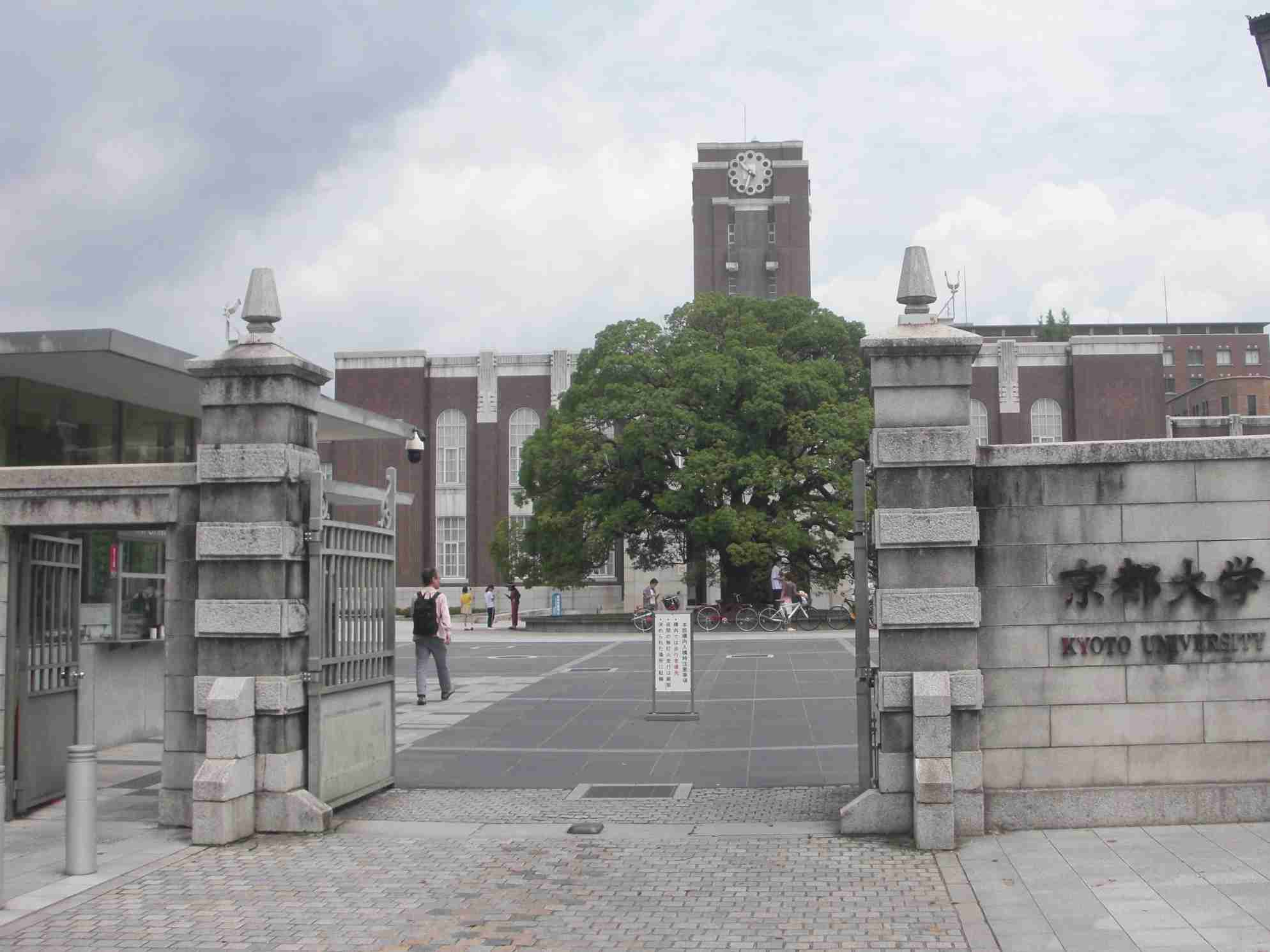
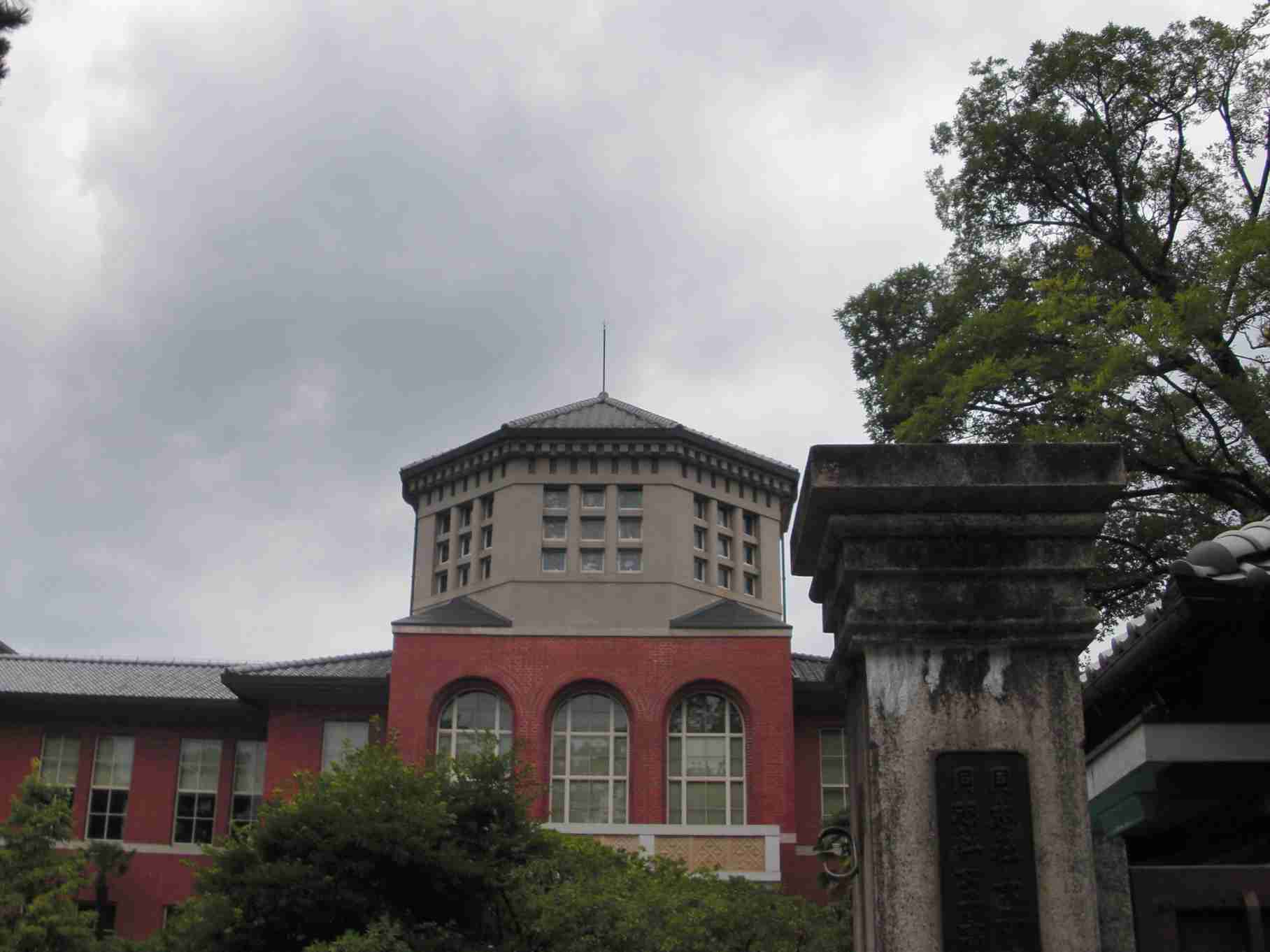
Photo is a main gate with a famous clock tower. Photo is a historical building which was built at 1894. This was founded by imperial ordinance on 1897, and produced the largest number of Nobel laureates in Japan. Doshisha Academy was established on 1875 by J.H.Neesima (Jo Niijima) who was baptized.
- Tea Ceremony (Cha-no-yu) and Flower Arrangement (Ikebana)
- These are outstanding arts among enumerous arts which contribute the basic formation of Japanese culture.
Urasenke Konnichian (one of Cha-no-yu centers) Ikenobo (one of Ikebana centers) 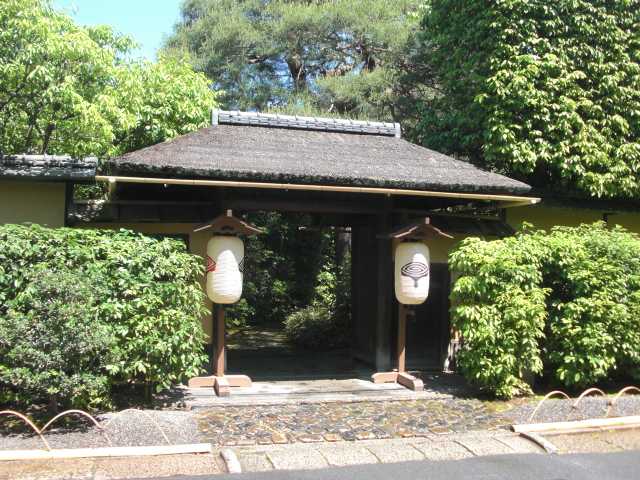
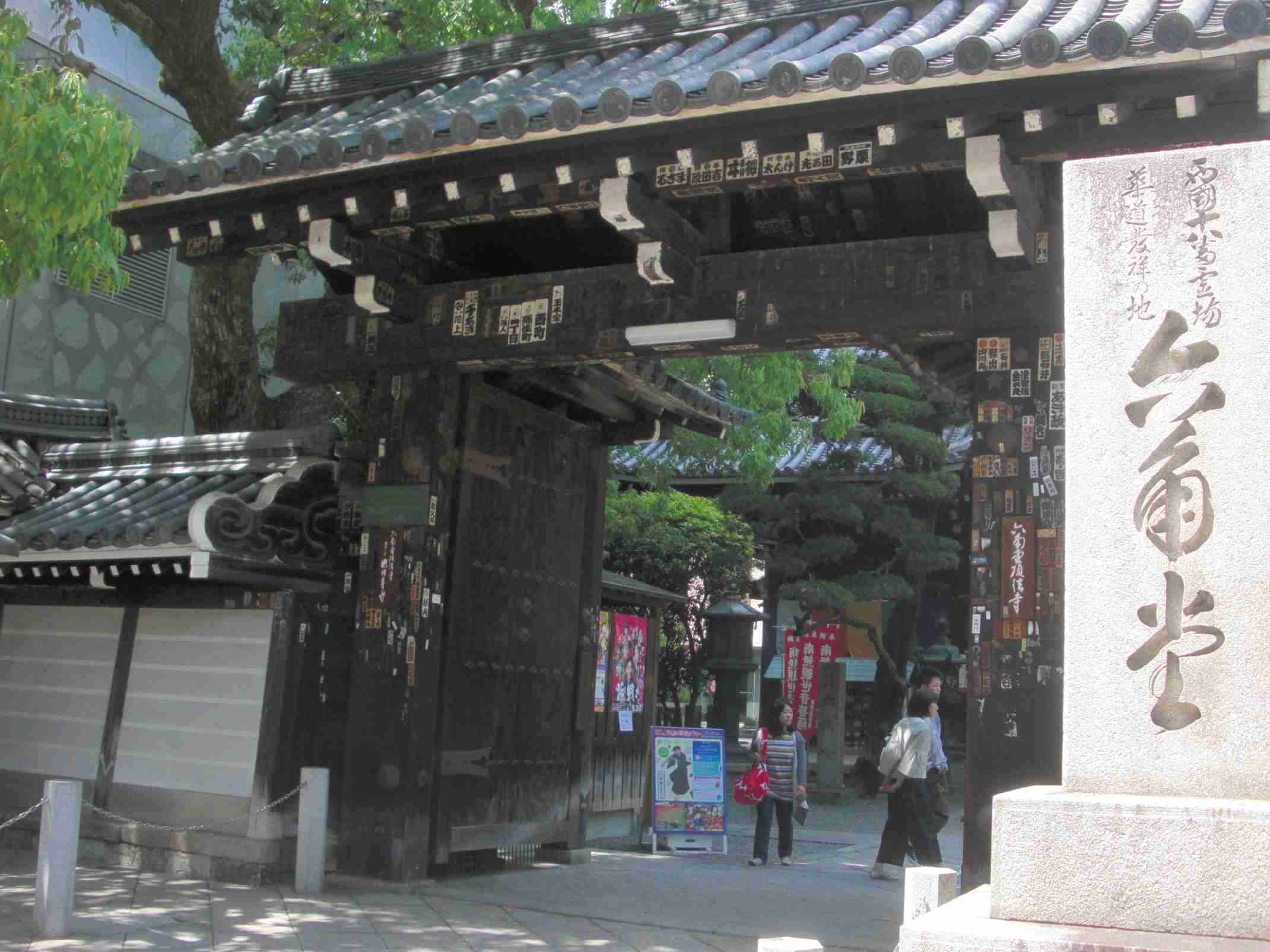
Photo is Kabuto-mon Gate of Konnichian. Photo is Rokkaku-do where Ikenobo was developped at 15th century. Tea Ceremony (Cha-no-yu) is a spiritual and aesthetic discipline for refinement of the self. Omotesenke is one of schools. Ikebana (Kado) is the way to arrange flowers to represent heaven, earth and humanity. Sogetsu is one of schools.
- These are outstanding arts among enumerous arts which contribute the basic formation of Japanese culture.
- Historical Places
- There are many historical places in Kyoto because Kyoto was the capital of Japan for long term.
- A few samples of places which are selected among so many places from the point of view of Imperial family's history.
Ruins of Heian-kyo-Daigokuden Replica of Oten-mon Gate (Heian-jingu) 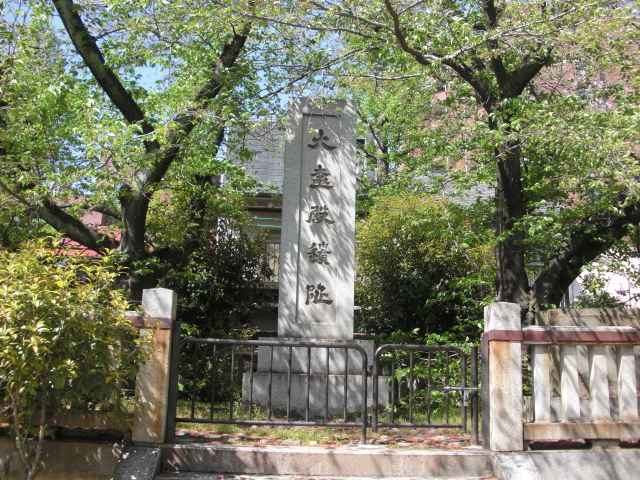
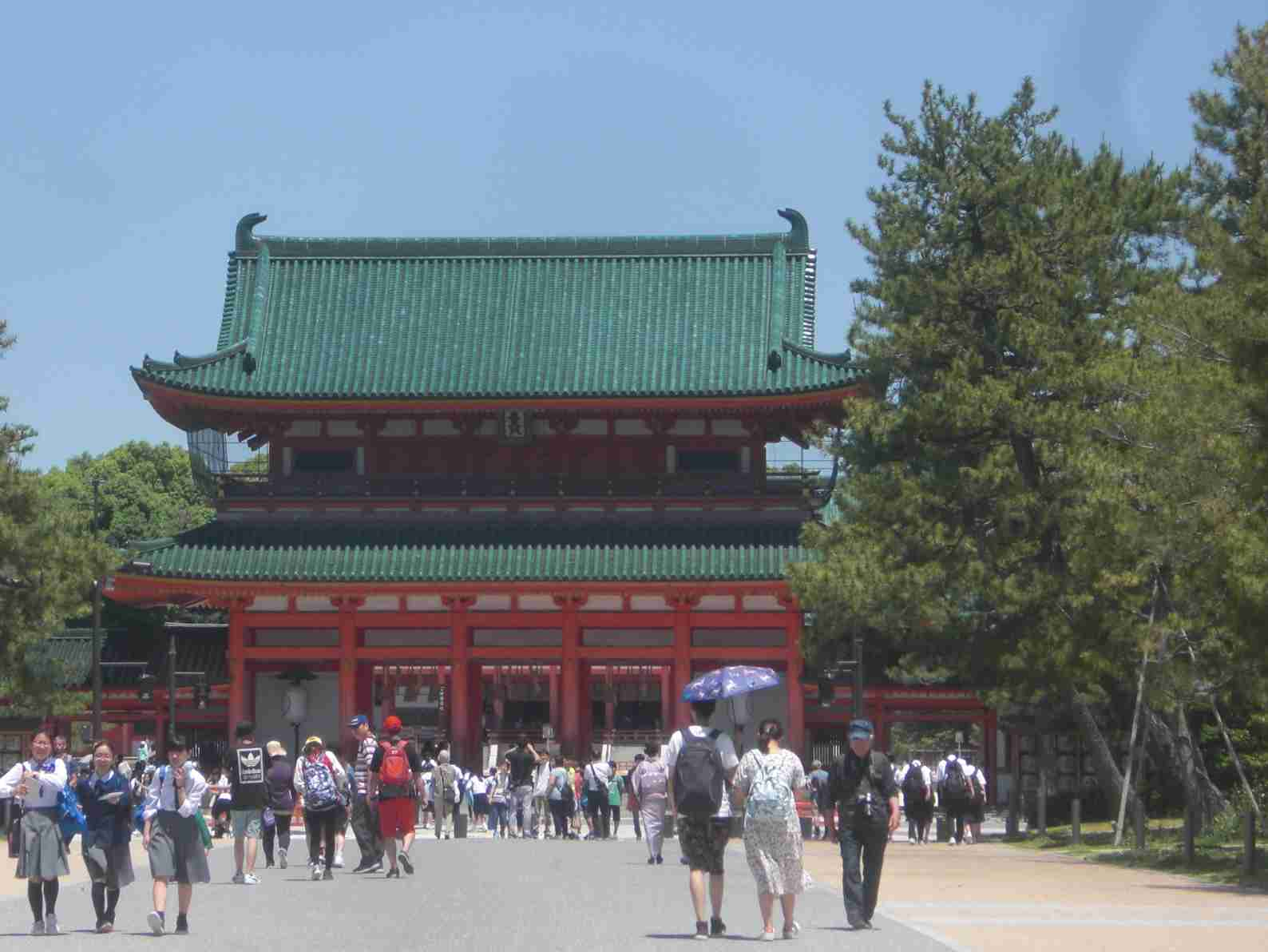
This is located at central Ancient Kyoto (Senbon Ave.). Photo is Oten-mon Gate of Daigokuden (Replica). Daigokuden is a Main Palace in the Imperial Palace. It was built at 794 and destroyed by fire at 1177. It was built at 1895 by 5/8 its original size and is located at eastern Kyoto in Okazaki park (different place from original). Kyoto Imperial Palace (Gosho) Nijo-jo Castle (Nijo-jo) 
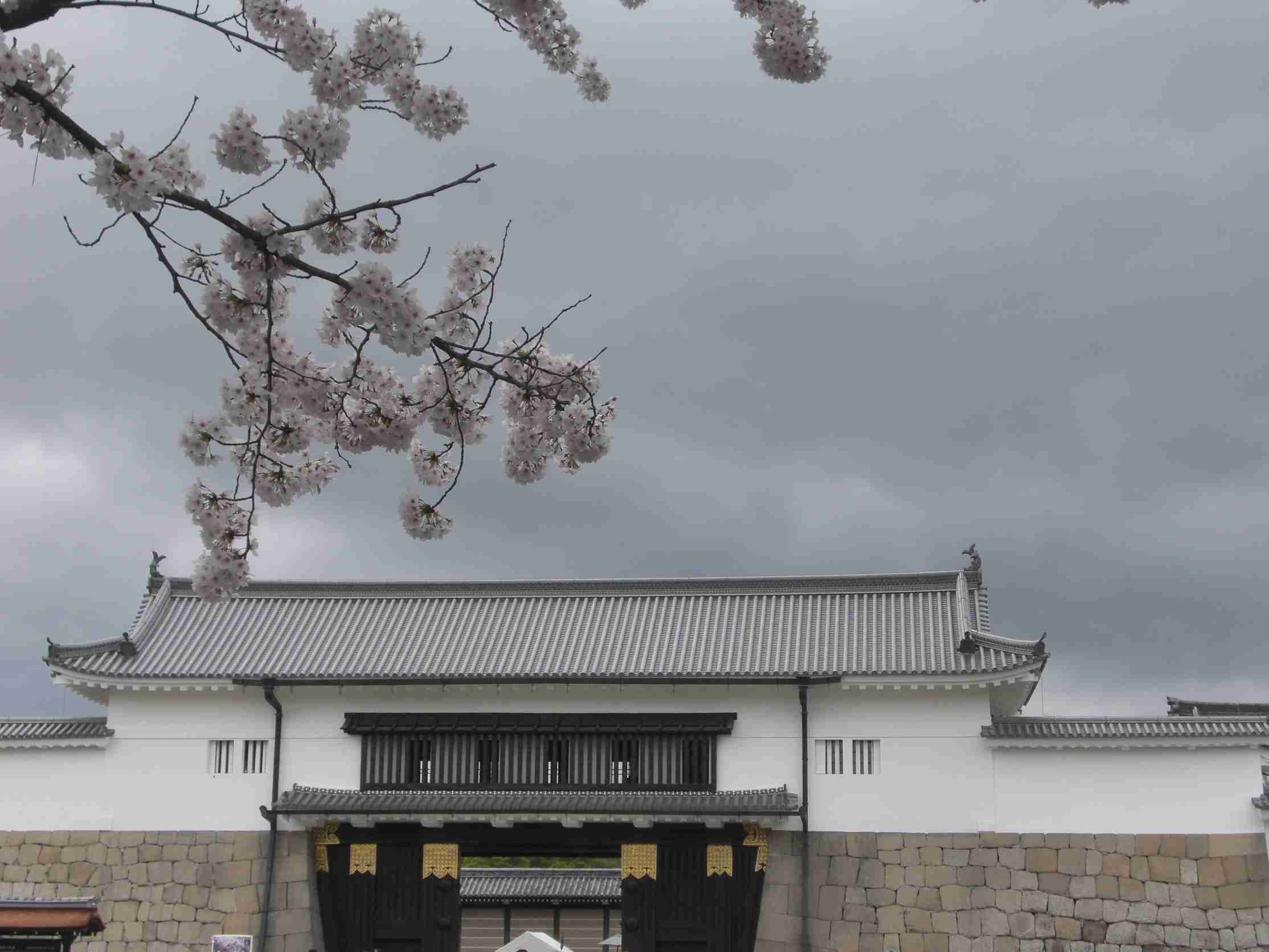
Photo is Kenshun-mon Gate at east-south of Gosho. Photo is Higashi-Ote-mon Gate (Horikawa Ave.). Gosho was a home to the Imperial family from 1332 to 1869 (after 1177's fire, different place from original). Tokugawa family built Nijo-jo at 1603 to monitor the Imperial family. Castle is a world Heritage.
- A few samples of places which are selected among many places by my favorite.
- There are another places. For example
- 'Shogunzuka mound'
- You can the same great views as 'Daimonji Hidoko'.
- You must climb mountain for 'Daimonji Hidoko', but you can go to 'Shogunzuka mound' by Keihan bus.
- More convenient places to go, but to get less funs.
- Kyoto Tower
- Kyoto station rooftop observatory
- 'Shogunzuka mound'

